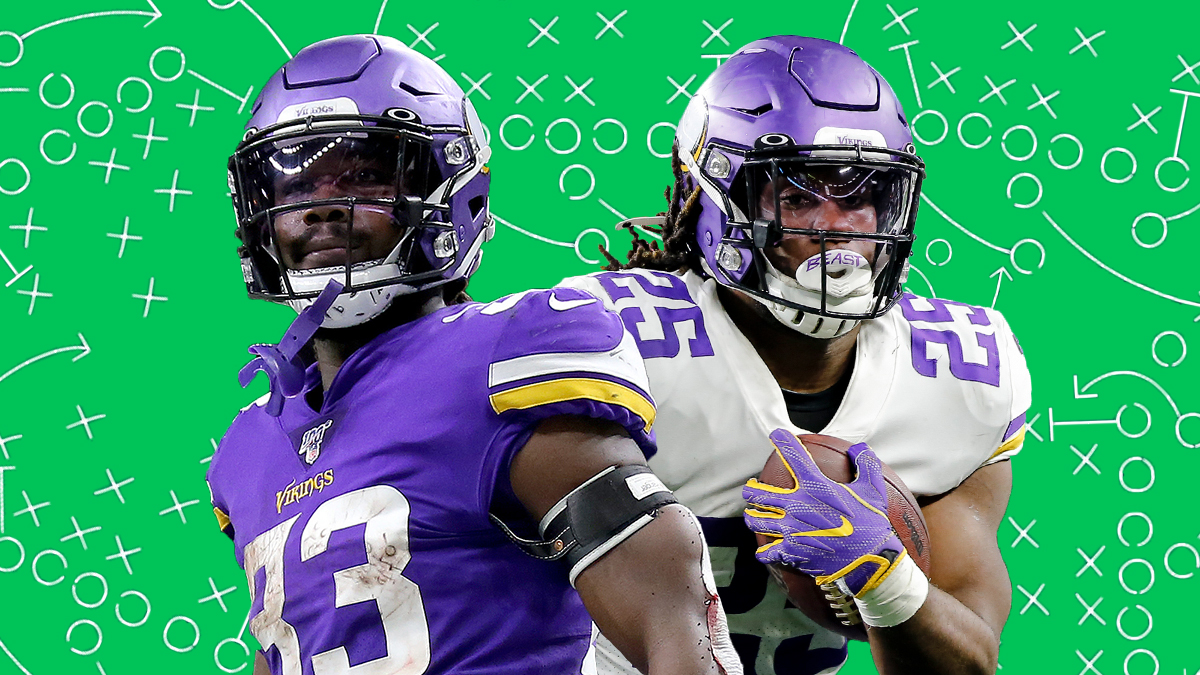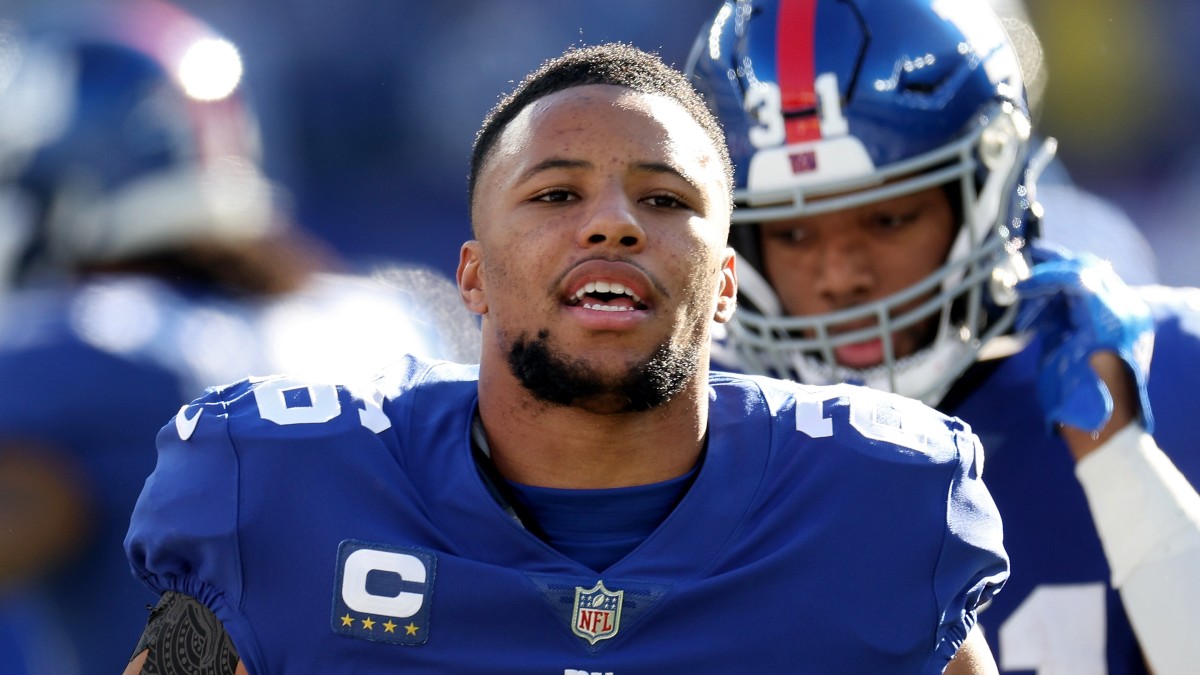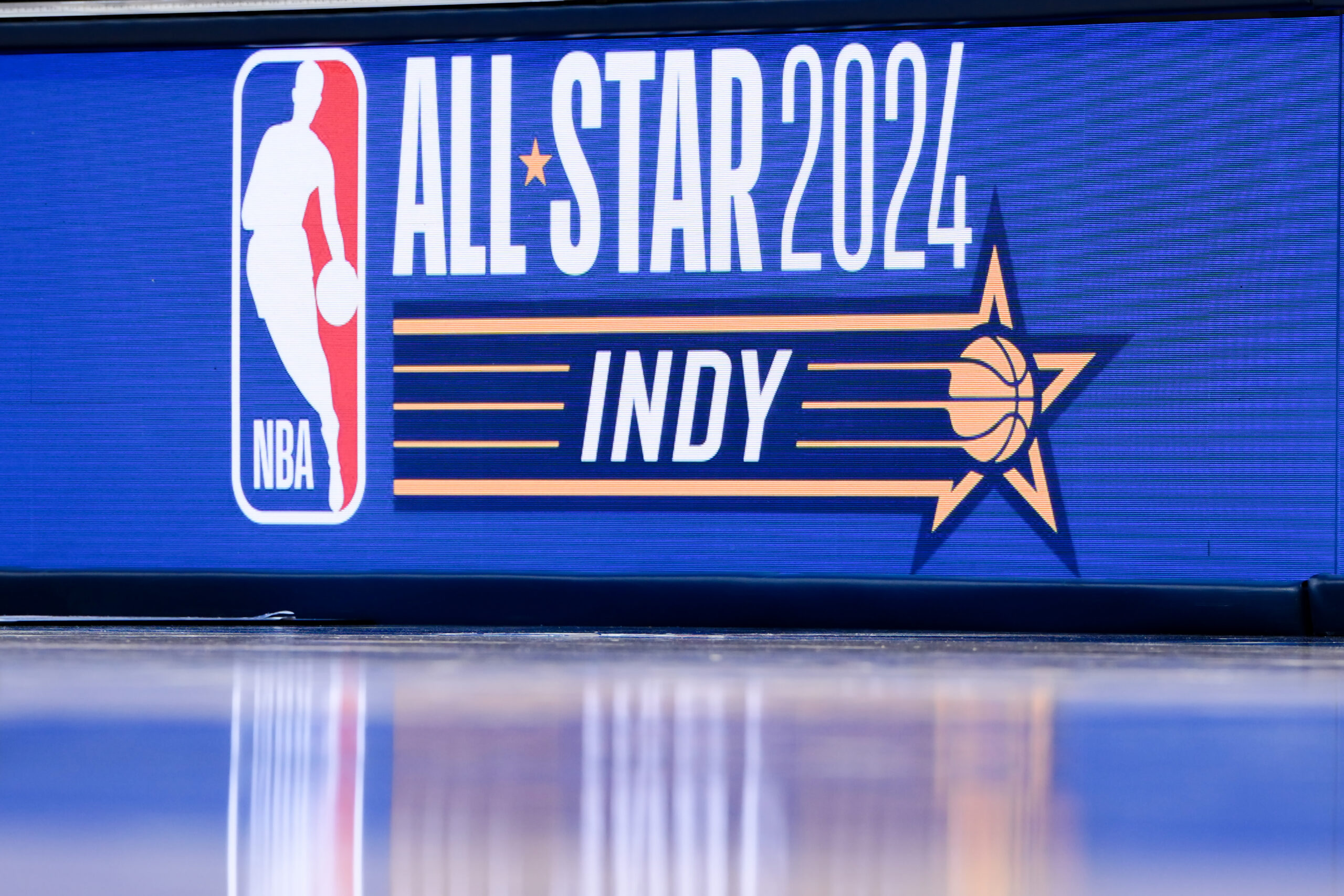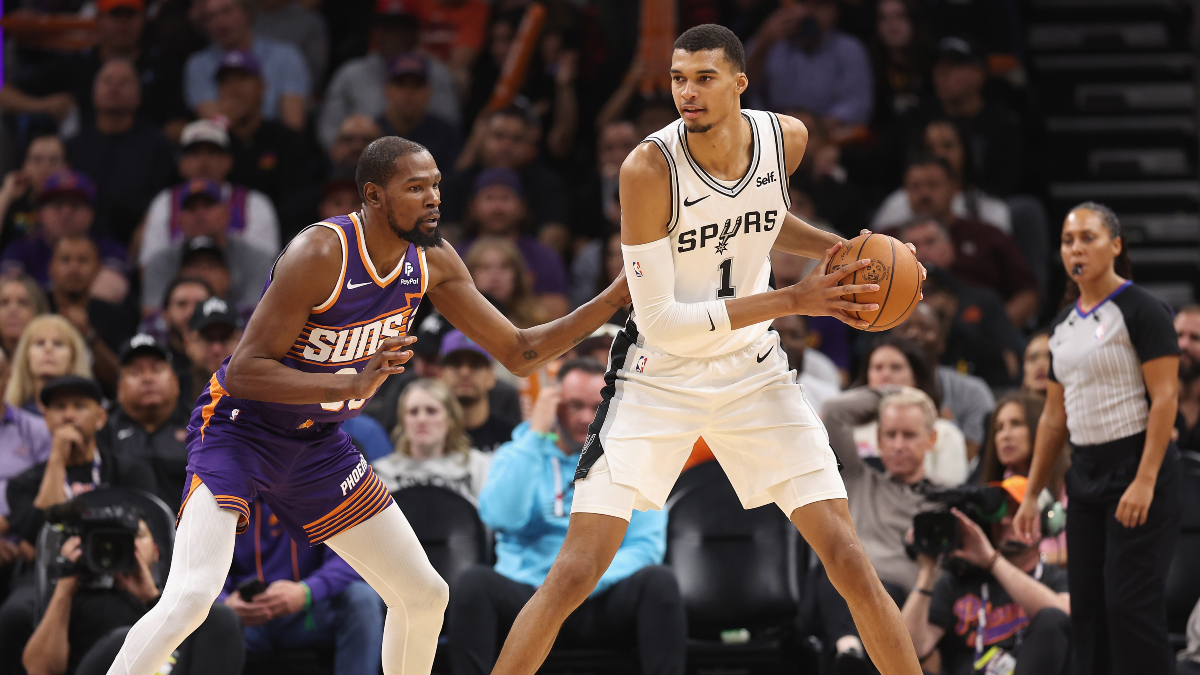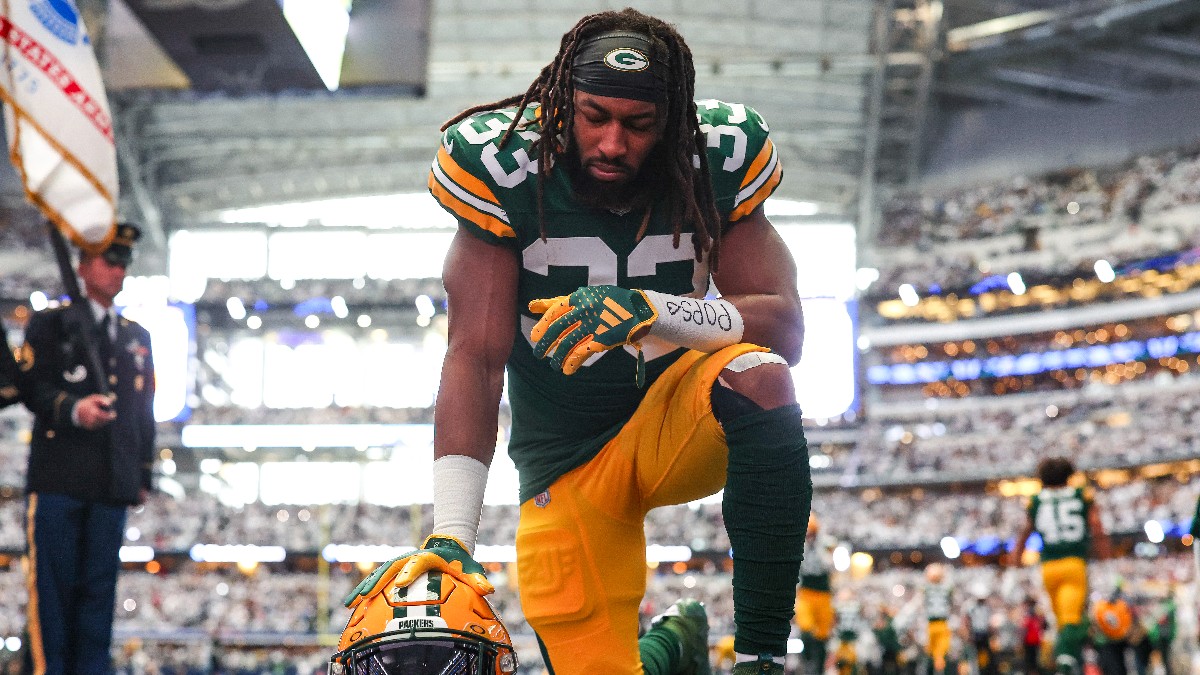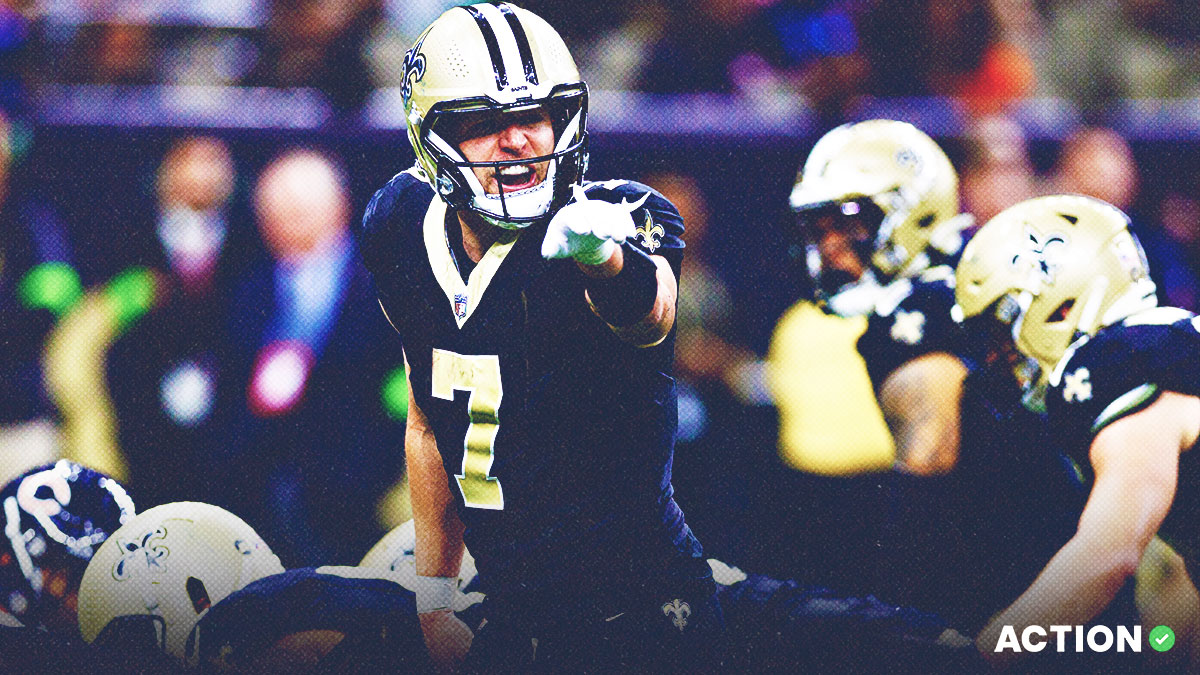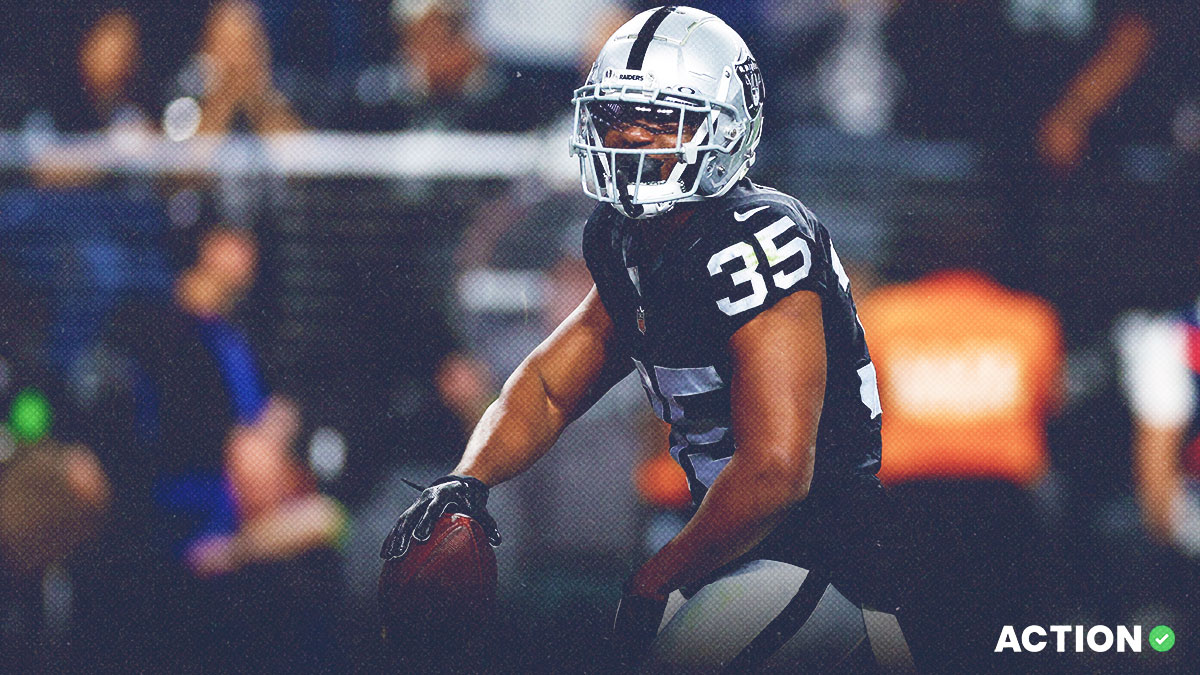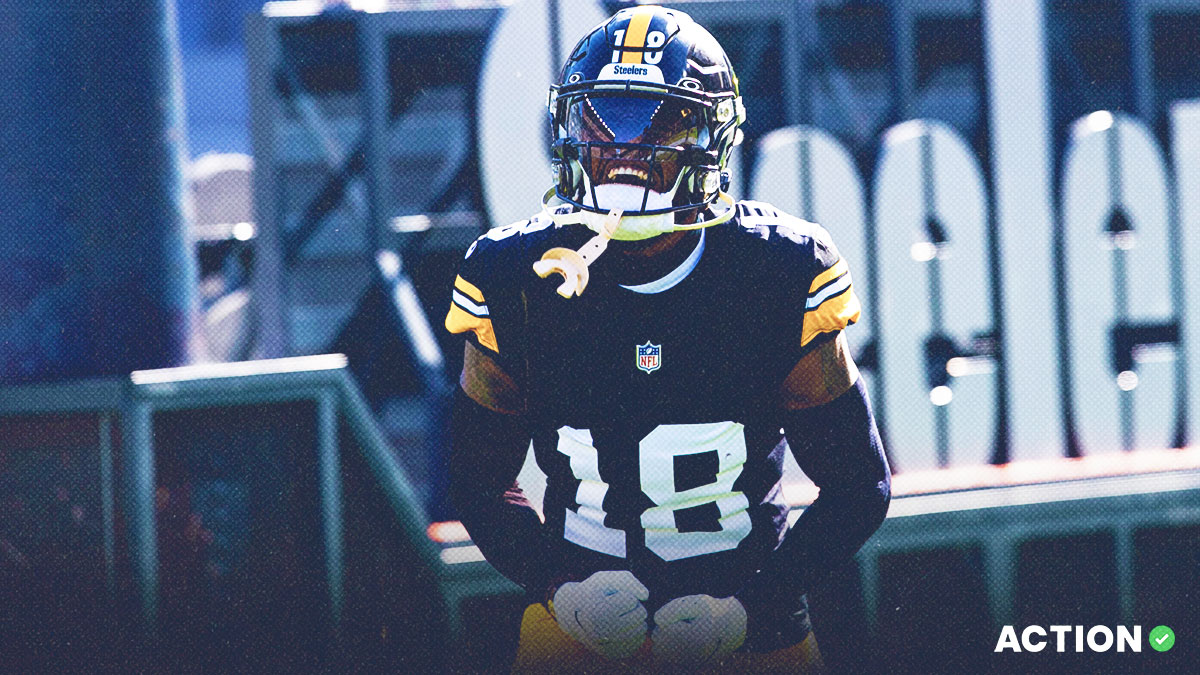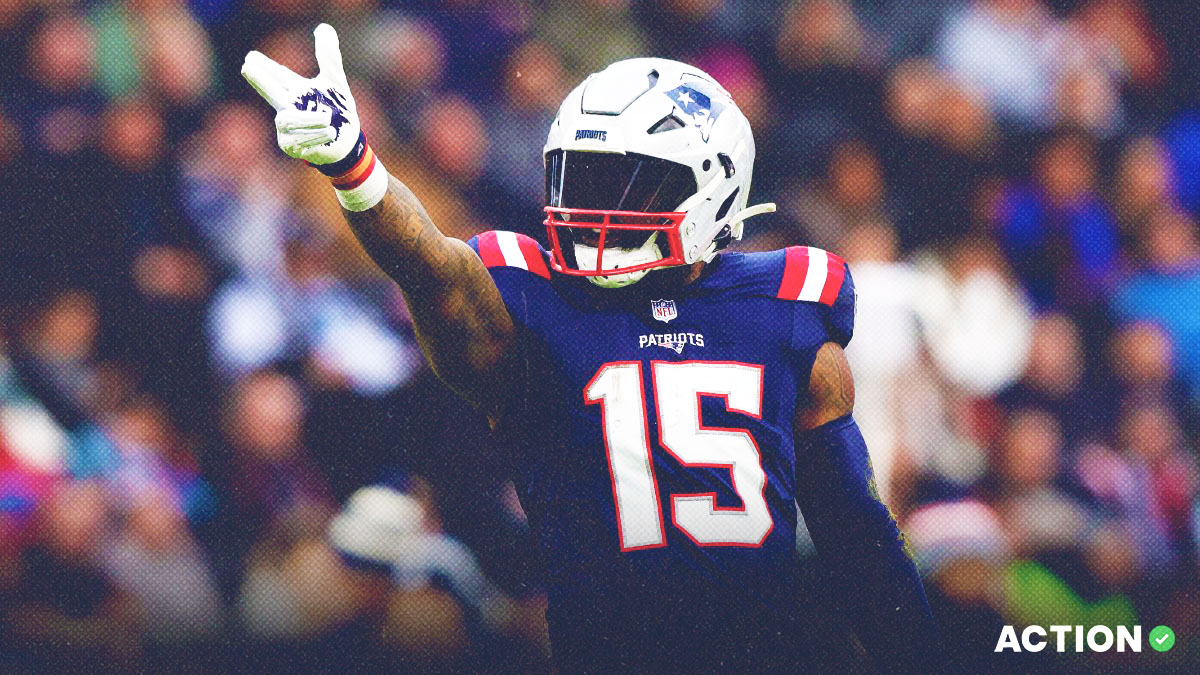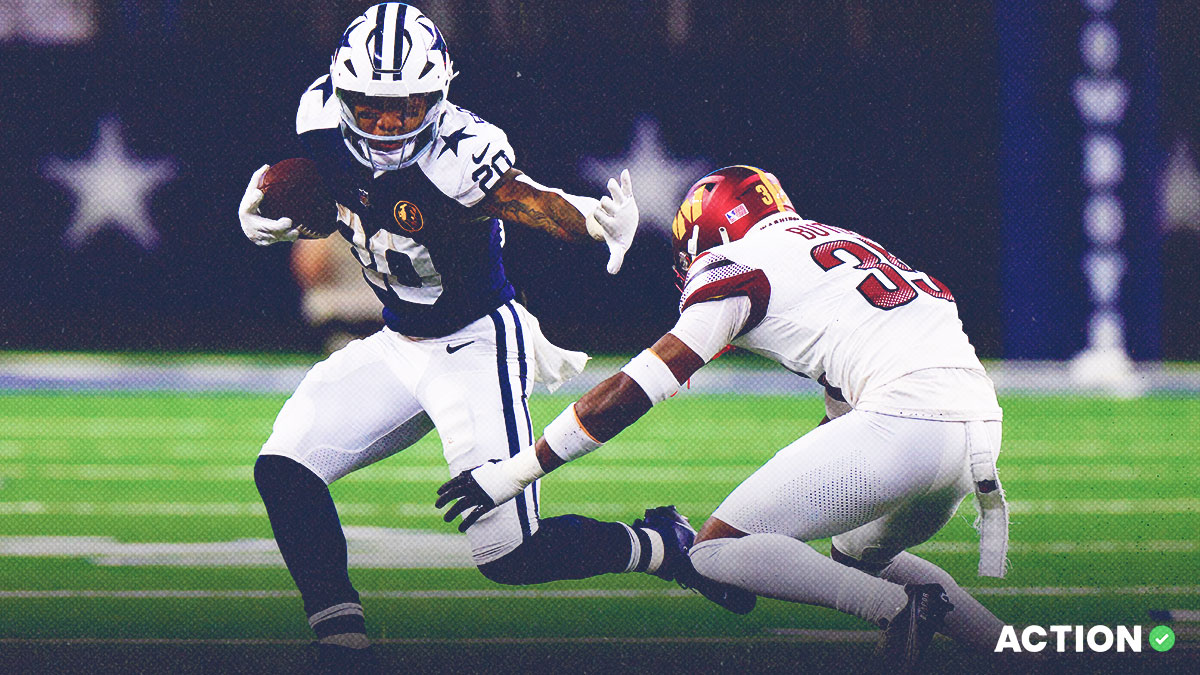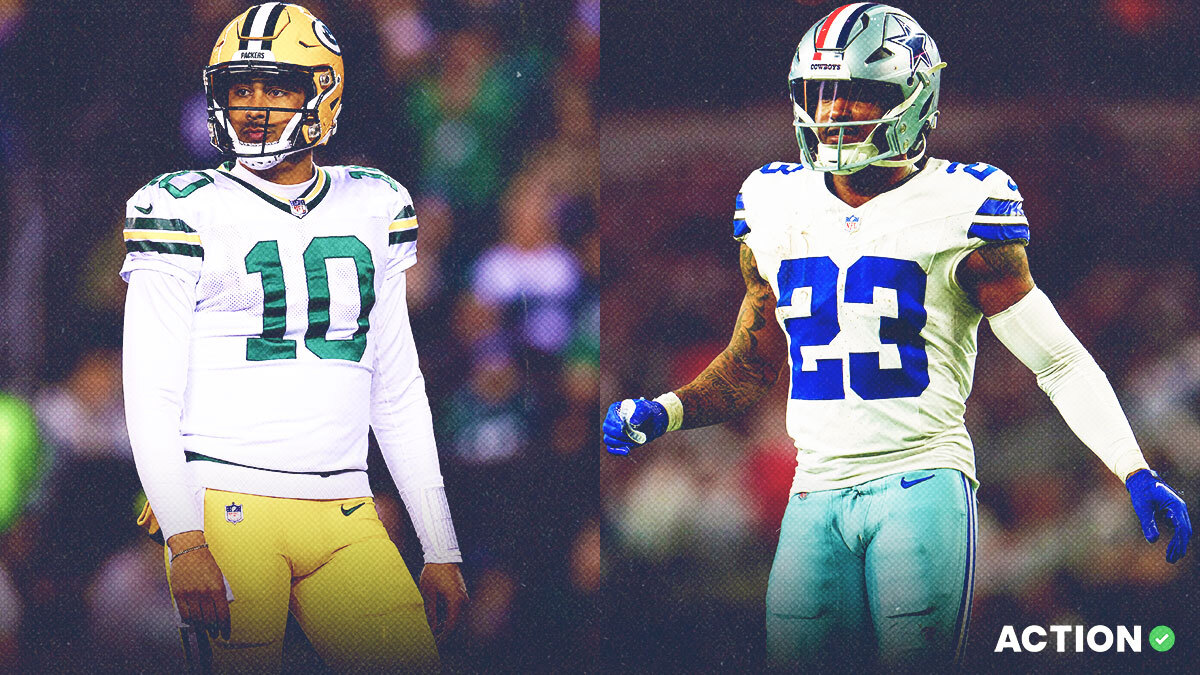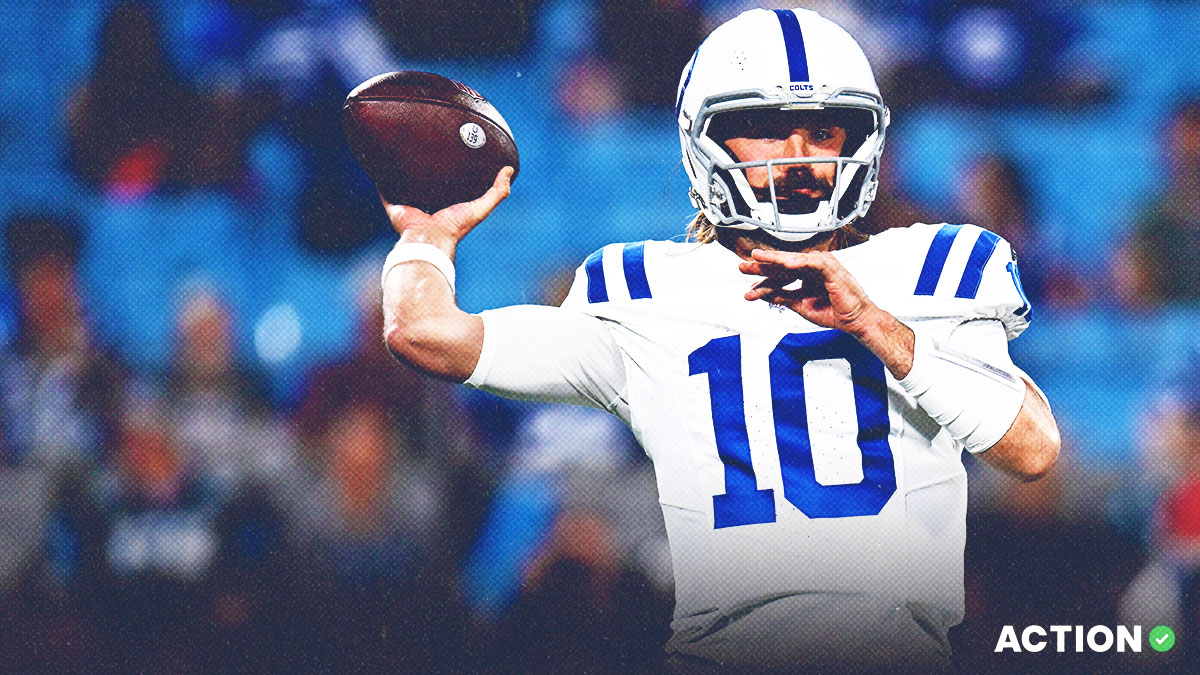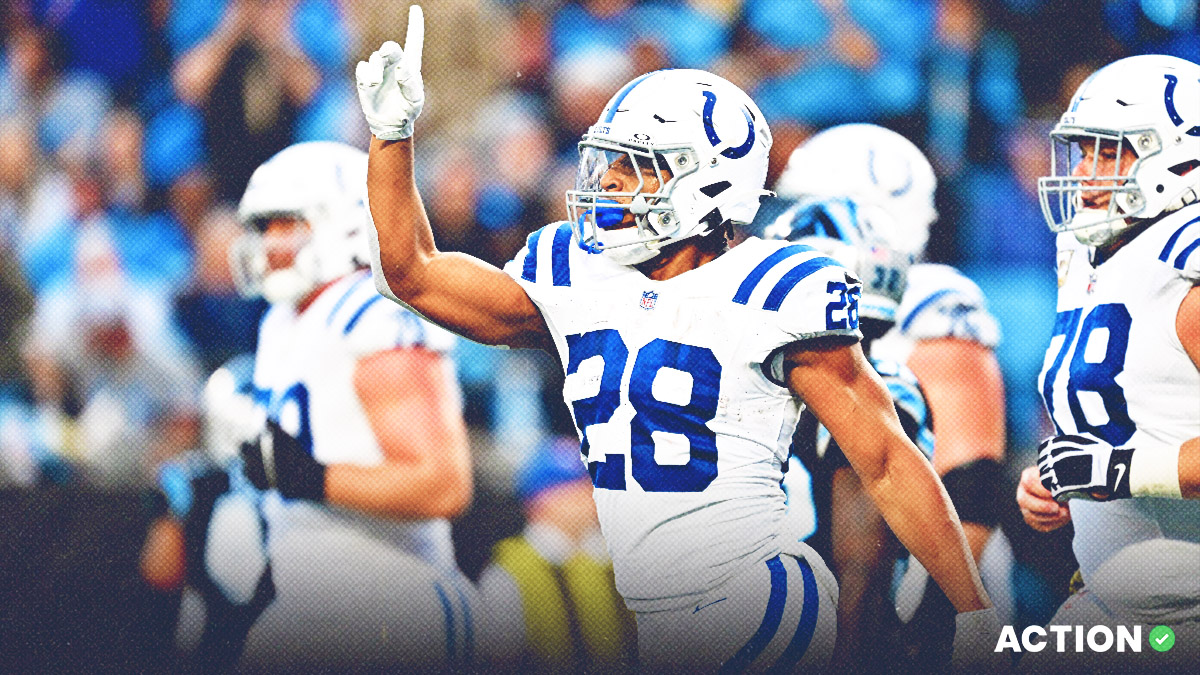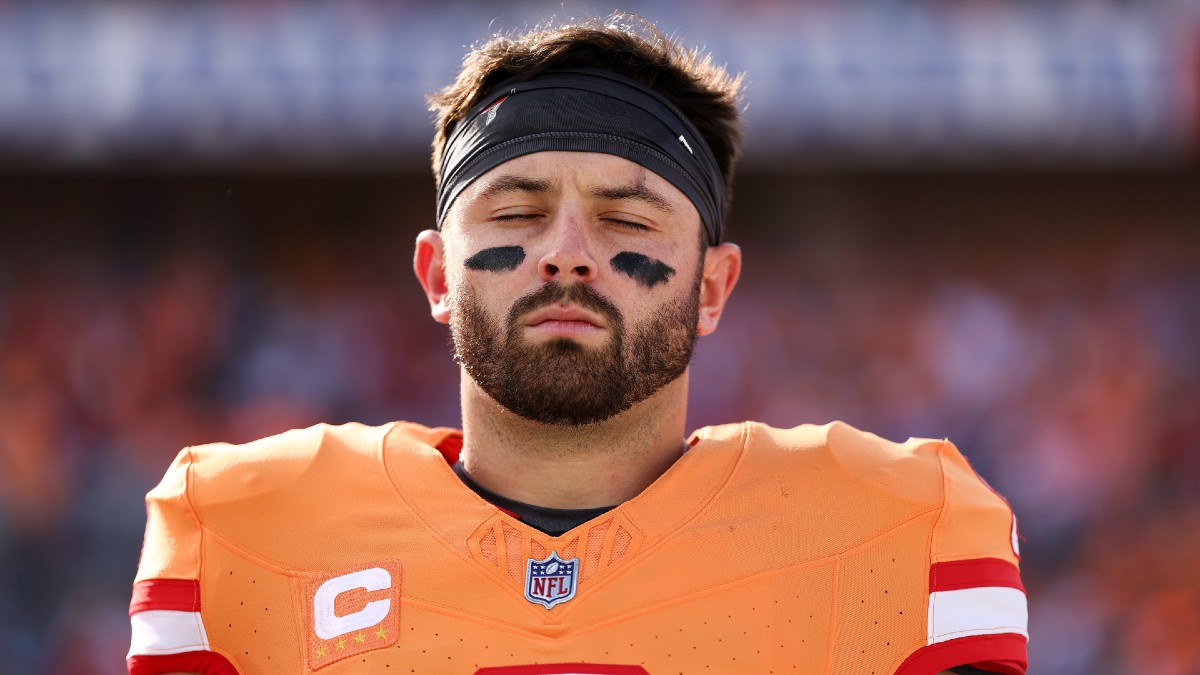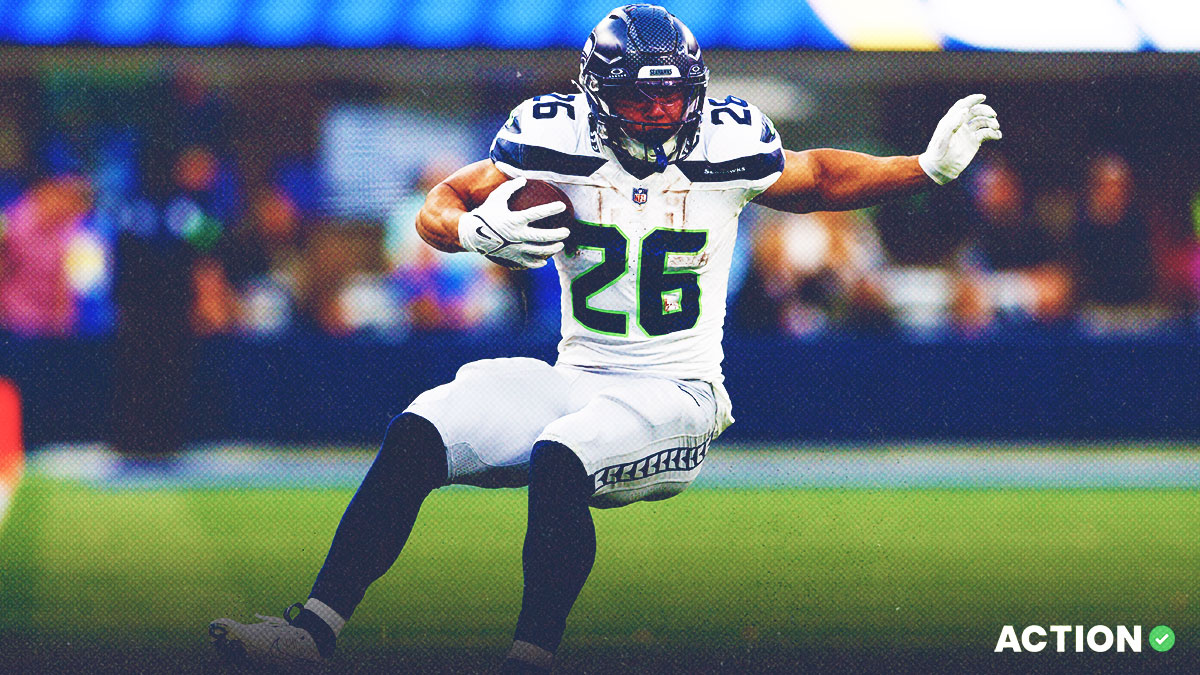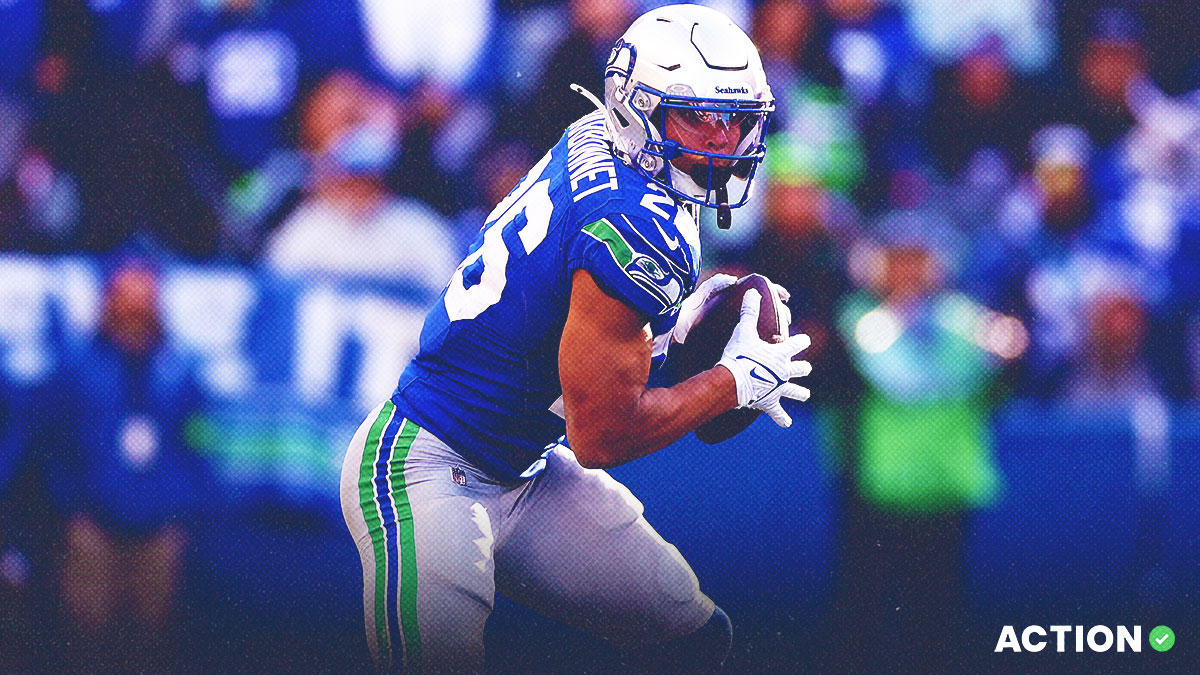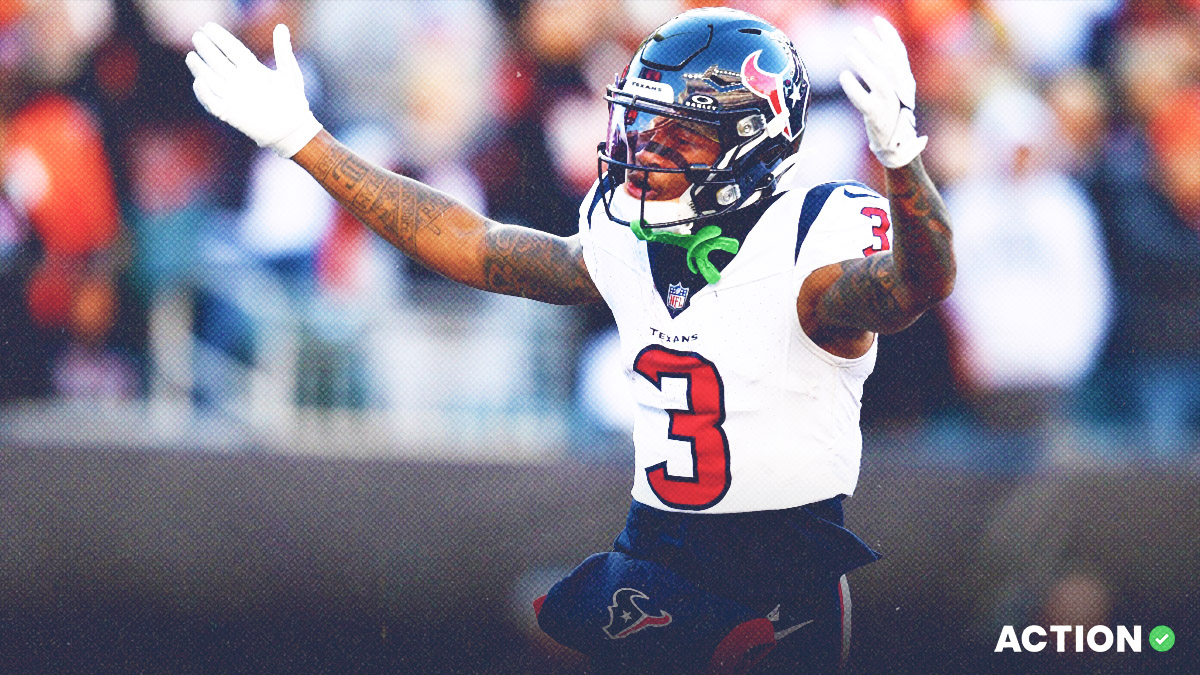Editor's note:Cam Akers suffered a torn Achilles before the Rams' training camp even kicked off — an unfortunate example of why we should prioritize targeting backups whose upside isn't fully factored into how they're being drafted.
The following analysis of the other 31 backfields remains up-to-date as of July 20.
Drafting potential sleepers isn't as simple as targeting backups of the highest-profile fantasy running backs.
That's why in order to find the best values, I created my Undervalued Upside Ratings, which are designed to identify RBs whose upside isn't being fully factored into their average draft position (ADP).
Last season, we struck gold with Colts rookie Jonathan Taylor, who was one of only seven backup RBs to earn an "A" in my initial ratings for 2020. At the time, he was being drafted as the RB24, but his projected ceiling as a starter was RB11 — and I projected he had a 65% chance to leapfrog Nyheim Hines.
Taylor emerged as the lead back early on and finished as the RB7 across the three primary scoring formats.
Now we're looking for the 2021 version(s) of him.
Before we dive in, though, there are a couple clarifications we need to make:
- These ratings — i.e. the letter grades assigned to each team's primary backup in the tables below — are based on (1) each backup's projected season-long ranking in their present role; (2) their upside (aka their projected ranking) if their team's starter were to suffer an injury, otherwise miss time, or be leapfrogged by said backup; and (3) the backup's ADP relative to their upside.
- The following ratings, projections and analysis of every running back featured (backup or otherwise) are based on information we have as of early July — and is not only subject to change between now and Week 1, but guaranteed to evolve through training camp and preseason games. So, while I won't be updating the analysis of each backfield, I will be updating the second table below in real-time over the next two months so you can consult it for the latest ratings.
Now let's quickly run through the full ratings, then take a closer look at the situations in all 32 backfields.
Note: ADP data is courtesy of 4for4’s composite of six major sites.
2021 Undervalued Upside Ratings
Click the arrow to preview the backup ratings and/or use their hyperlinked names to skip ahead to that analysis
| Upside Rating | Backup RB | Rank As Backup | Rank As Starter | ADP |
|---|---|---|---|---|
| A+ | Alexander Mattison | 52 | 7 | 49 |
| A+ | Latavius Murray | 38 | 12 | 47 |
| A | Kareem Hunt | 27 | 7 | 24 |
| A | Trey Sermon | 35 | 18 | 33 |
| A- | Tony Pollard | 48 | 12 | 41 |
| A- | Darrel Williams | 55 | 22 | 64 |
| A- | Darrell Henderson | 46 | 17 | 46 |
| B+ | Gus Edwards | 34 | 18 | 42 |
| B+ | Chuba Hubbard | 71 | 19 | 53 |
| B+ | Jamaal Williams | 40 | 19 | 44 |
| B+ | Rashaad Penny | 54 | 22 | 54 |
| B+ | J.D. McKissic | 46 | 22 | 48 |
| B | James Conner | 29 | 22 | 38 |
| B | Devin Singletary | 40 | 24 | 45 |
| B | Samaje Perine | 67 | 24 | 76 |
| B | A.J. Dillon | 40 | 16 | 35 |
| B | Kenyan Drake | 40 | 18 | 39 |
| B | Salvon Ahmed | 57 | 33 | 63 |
| B | Devontae Booker | 70 | 19 | 64 |
| B- | Javonte Williams | 29 | 21 | 25 |
| B- | Travis Etienne | 31 | 16 | 23 |
| C+ | Benny Snell | 78 | 35 | 72 |
| C+ | Ronald Jones II | 45 | 25 | 31 |
| C | Marlon Mack | 71 | 32 | 61 |
| C | Justin Jackson | 56 | 26 | 75 |
| C | Tevin Coleman | 47 | 30 | 57 |
| C | Darrynton Evans | 71 | 36 | 62 |
| C- | Damien Williams | 75 | 35 | 60 |
| C- | Phillip Lindsay | 46 | 31 | 55 |
| C- | Kenneth Gainwell | 55 | 35 | 50 |
| D | Rhamondre Stevenson | 91 | 35 | 59 |
| F | Qadree Ollison | 98 | 44 | 95 |
Undervalued Upside Ratings Methodology
Like I mentioned above, these ratings are based on discrepancies that I've identified between a backup's ceiling and their current ADP, but here are the exact factors I weighed when projecting their ceilings:
- The backup’s current role. (You can read my full definitions of each role here.)
- The role of the projected Week 1 starter.
- The health of the projected Week 1 starter.
- My projected chance the projected Week 1 starter maintains his RB1 duties when healthy.
- My projected chance the backup leapfrogs the Week 1 starter when both RBs are healthy.
Here’s an expanded version of the collapsed table above featuring each of those factors:
Arizona Cardinals
The Cardinals brought in James Conner on a one-year deal worth $1.75 million to replace the void left by Kenyan Drake.
When healthy, I'm projecting Conner for 11-13 carries and 1-2 receptions per game. I also expect him to see most of the goal-line work. And as evidenced by their rush attempts inside the 5-yard line last season, the Cardinals tend to commit to their goal-line back:
- Kenyan Drake: 22
- Kyler Murray: 8
- Chase Edmonds: 1
Conner would offer RB3/Flex value when healthy and mid-range RB2 value if Chase Edmonds were to ever miss time, making Conner an enticing target at his current ADP (RB38).
As long as he stays healthy, Conner should return value. However, there is some concern as a toe injury plagued his 2020 season. He had offseason surgery, but there's a chance he won't be 100% by the start of this season. Therefore, we'll want to monitor training camp reports on him very closely.
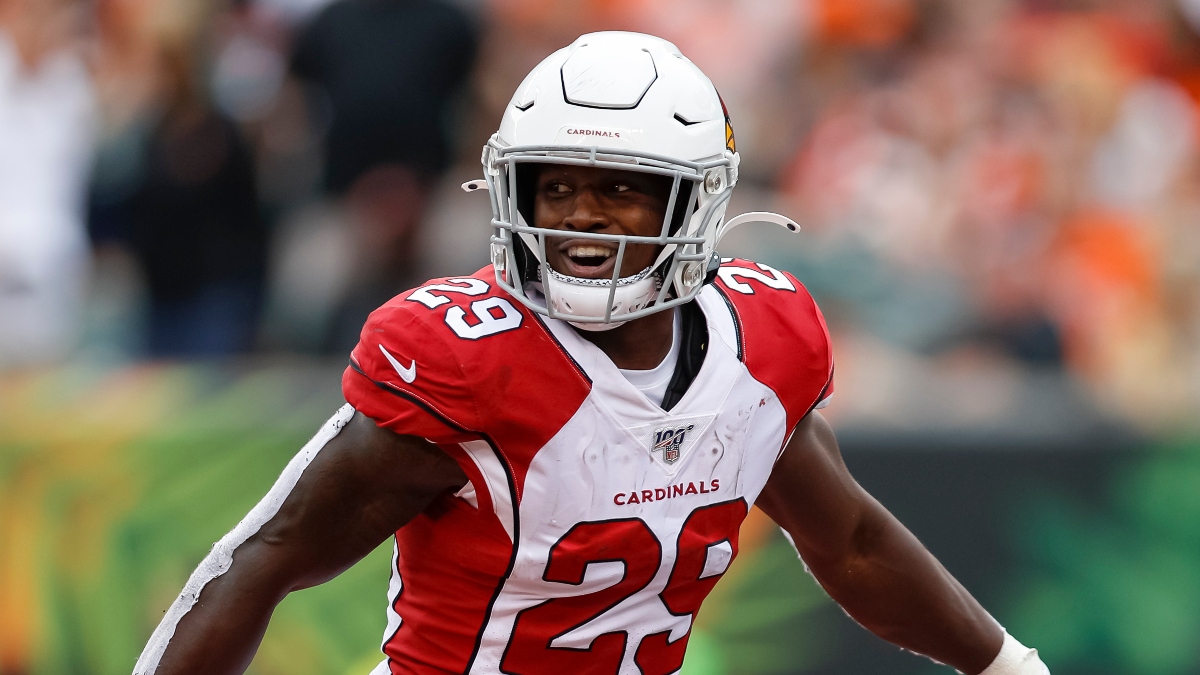
I'm much more interested in Edmonds at his ADP (RB28). He finished as the RB30 as the change of pace back behind Kenyan Drake last season. Edmonds will likely see 4-5 more touches per game in what should be an even timeshare with Conner.
Conner has never played more than 14 games in a season over his four-year career, so Edmonds should provide RB1/2 value in those inevitable games Conner will miss this season.
Takeaways
- James Conner: Worth a flier at his current ADP, but closely monitor reports on his toe and overall health.
- Chase Edmonds: Aggressively target at his current ADP.
Atlanta Falcons
Mike Davis was a league-winner in 2020 and is the perfect example of how high-upside backups can pay dividends. He was able to parlay his success into signing a two-year, $5.5 million contract with the Falcons this offseason.
Now I'm projecting Davis as a low-end RB2 and think he's a steal at his current ADP (RB27). The only reason to fade him at that price would be if you fear the Falcons will eventually add a veteran RB like Adrian Peterson or Le'Veon Bell.
I would expect a murky RBBC between Qadree Ollison, Cordarrelle Patterson, and Javian Hawkins if Mike Davis ever missed a game. You're probably better off letting someone else roll the dice on those backups.
Takeaways
- Mike Davis: Target at current ADP (and hope they don't add a veteran RB)
- Cordarrelle Patterson: Maybe worth a flier in deeper PPR formats
- Qadree Ollison/Javian Hawkins: Avoid, unless something changes
Baltimore Ravens
The Ravens started to phase Mark Ingram out of the offense following their Week 7 bye in 2020, which gives us a pretty good idea of how this situation will shake out in 2021.
J.K. Dobbins will be the lead back in a pretty even timeshare with Gus Edwards. I'm projecting Dobbins as the RB19 with Edwards in the lineup, and RB7 with Edwards out of the lineup. Dobbins' ADP (RB16) seems like a fair price.
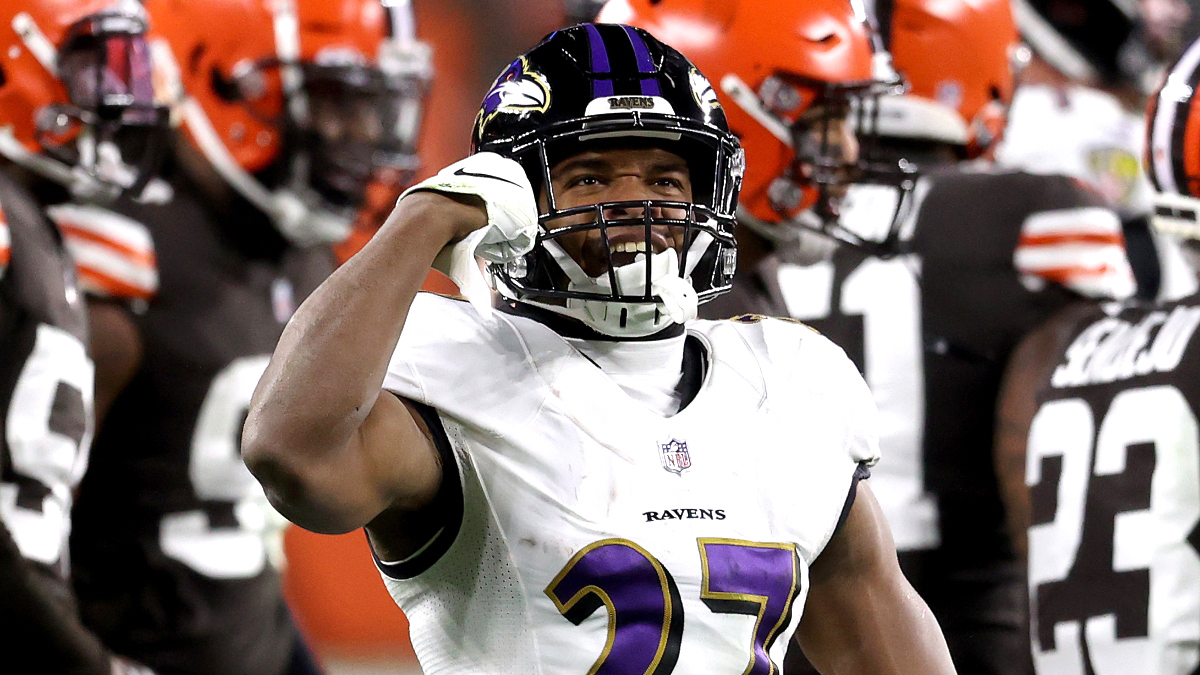
Edwards offers a ton of value at his ADP (RB42). It's unlikely he will ever leapfrog a healthy Dobbins — the talent gap between the two is unquestionable. However, Edwards' usage doesn't justify the nearly 30 rank gap in ADP. He should provide RB3/Flex value most weeks while offering mid-range RB2 upside whenever Dobbins is out of the lineup.
Here's a rundown of various splits between the two backs when both were active from Weeks 8-17 of 2020:
- % of team rush attempts: Dobbins 33% vs. Edwards 26%
- Rush attempts inside the 5: Dobbins 7 (6 TDs) vs. Edwards 9 (3 TDs)
- Targets: Dobbins 10 (7 receptions) vs. Edwards 11 (9 receptions)
Based on those splits, their ADP should be much closer heading into 2021.
Takeaways
- J.K. Dobbins: Take at his current ADP if you believe in his talent and that he'll have a Year 2 breakout.
- Gus Edwards: Target at his current ADP as one of the few RBs in that range who won't need the starter to miss time to return value.
Buffalo Bills
The Bills are one of three teams not to have a RB with an ADP inside the top 35. (The Texans and Patriots are the other two.)
Zack Moss (RB40) offers the most upside at his ADP since he can be a true workhorse back if given the opportunity. However, most weeks, he will be a RB3/Flex option with a very low ceiling considering Josh Allen's goal-line dominance — three straight seasons with eight or more rushing TDs — and Devin Singletary's pass-catching role.
Even if Singletary were to get injured, Moss would provide only low-end RB2 value. And while Matt Breida was a significant upgrade to the Bills' RB depth, he could limit the potential upside for Moss and Singletary if either were to ever miss time.
I want to like Moss at his ADP, but this is a backfield I'm avoiding. You're better off investing in Allen and the passing offense.
Takeaways
- Zack Moss: Offers slight value at his current ADP (RB40), but target sparingly as his upside is limited.
- Devin Singletary: Avoid at his current ADP (RB45). Darrell Henderson (RB46), Latavius Murray (RB47) and Alexander Mattison (RB49) all offer more upside in this range.
- Matt Breida: He isn't draft-able outside of deeper leagues. His presence also lowers the injury upside for both Moss and Singletary.
Carolina Panthers
The Panthers' backfield is very straightforward: Christian McCaffrey will be the top running back in fantasy when healthy.
Forth-round pick Chuba Hubbard can channel 2020 Mike Davis production if ever asked to start for an injured CMC, though. Hubbard can handle a 15- to 20-touch role and would be a low-end RB2 option in that scenario. I would expect Rodney Smith and Reggie Bonnafon to chip in as change-of-pace options, but don't view either of them as draft-able.
Takeaways
- Christian McCaffrey: The overall RB1 when healthy.
- Chuba Hubbard: An upside bench stash at his ADP (RB53). He won't offer any value unless CMC misses time, but in that scenario, he could provide low-end RB2 value.
Chicago Bears
David Montgomery finally broke out toward the end of his second season — between Weeks 12 and 17 of 2020, only Derrick Henry outscored Montgomery in half PPR scoring. Montgomery benefited from there being no depth behind him once Tarik Cohen suffered a season-ending injury in Week 3.
With Cohen back healthy this season and Damien Williams signing a one-year contract with the Bears, it's going to be tough for Montgomery to match last season's numbers. I'm projecting him as a mid- to low-end RB2, but the increased depth behind him limits his upside.
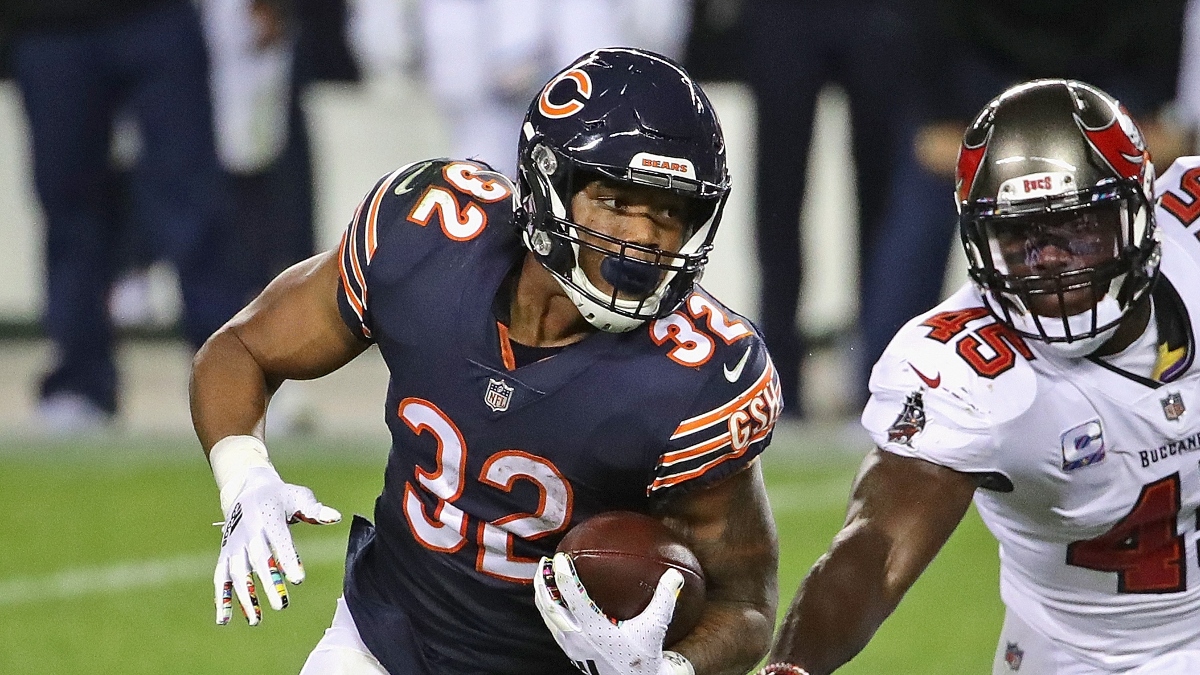
Cohen remains a low-ceiling, high-floor change-of-pace back who is worth a bench stash in deeper PPR formats. However, his pint-size frame limits his upside, considering he can never handle a 15-touch role.
Damien Williams would be the front runner to start for Montgomery when inactive, but sixth-round rookie Khalil Herbert could force a two- to three-way committee in that scenario.
Takeaways
- David Montgomery: Worth targeting at his ADP, but don't chase the upside we saw at the end of 2020 — the RB depth behind him has improved considerably.
- Tarik Cohen: Worth targeting in PPR formats, but his upside is limited.
- Damien Williams/Khalil Herbert: Neither back is worth stashing unless the situation changes.
Cincinnati Bengals
Joe Mixon will benefit from Giovani Bernard's departure. He should dominate both the rushing and passing down work, making him a low-end RB1.
Samaje Perine will provide virtually zero fantasy value unless Mixon misses time, but if and when he does, Perine could offer low-end RB2/Flex value. Perine's ADP (RB76) makes him practically free at the end of drafts, and he's worth a stash when you consider Mixon's increased role will elevate his chances of getting banged up.
Trayveon Williams or Chris Evans may push Perine for the backup role, but neither are draft-able as of writing.
Takeaways
- Joe Mixon: Increased workload makes him worth his ADP (RB12). However, his injury risk goes up slightly as well.
- Samaje Perine: Worth a free bench stash in deeper leagues as he has RB2 upside if Mixon gets injured or otherwise misses time.
Cleveland Browns
The Browns have the league's best RB duo in Nick Chubb and Kareem Hunt. It creates a unique scenario in which both backs limit each other's weekly ceiling when healthy. However, if either RB were ever to miss time, the other would become a top-five option.
Nick Chubb is the only top-10 RB who would see such a significant boost if his backup were to get injured. The added upside makes him a must-target at his ADP (RB9).
Kareem Hunt is the very reason I create these ratings and write this article — what I said about him last season remains true heading into 2021:
That’s what makes Hunt the type of RB I try to target in all of my drafts: He should have a role right out of the gate that will provide value that’s on par with his current ADP, while his upside if Chubb were to ever miss time is massive.
In that scenario, I would rank Hunt as a mid- to low-end RB1. That’s upside you’re essentially getting for free.
Takeaways
- Nick Chubb: Target at his ADP (RB9) — he's the only top 10 RB whose value rises if his backup gets injured.
- Kareem Hunt: Target at his ADP (RB24). His present talent and role is enough to return value even if Chubb plays all 17 games, but Hunt has mid-range RB1 upside whenever Chubb misses time.
Dallas Cowboys
We have to be careful when it comes to evaluating Ezekiel Elliott's 2020 season. He was the RB3 from Weeks 1-5 when Dak Prescott was under center, but after Dak Prescott's season-ending injury, Zeke posted RB25 numbers between Weeks 6-17.
Elliott should return mid-range RB1 value in 2021 if he and Prescott can stay healthy.
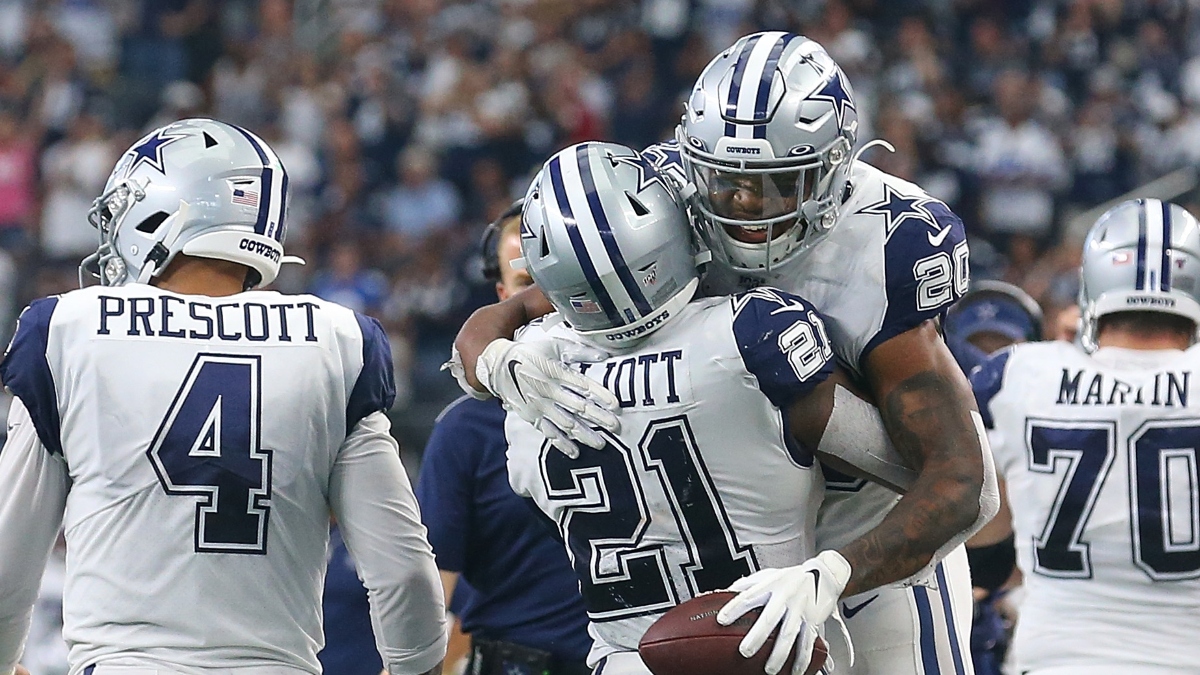
Tony Pollard is one of the premier backups to target because he offers low-end RB1 value whenever Zeke is inactive. Pollard posted a 12/69/2 and 6/63/0 line in Week 15 of 2020 when Zeke was out of the lineup. The Cowboys lack a viable No. 3 RB on the depth chart, which helps elevate Pollard's injury upside.
Takeaways
- Ezekiel Elliott: Target at his current ADP (RB7).
- Tony Pollard: He's worth targeting at ADP (RB41) due to his RB1 injury upside. However, he's unlikely to provide RB3/Flex value when Zeke is healthy. Gus Edwards (RB42) provides a better floor/ceiling combo at a similar price.
Denver Broncos
Melvin Gordon is the de-facto Week 1 starter heading into training camp, but that could change at any time — second-round pick Javonte Williams has the talent to become a workhorse back from Day 1, making this a position battle we'll need to monitor closely.
Even if Williams supplants Gordon as the starting back, it would be hard to project Williams as anything more than a low-end RB2/Flex play. Gordon is still good enough to command 10-15 touches per game. We also can't ignore the team's No. 3 back Mike Boone, who could see a few touches a game.
The argument for rolling the dice on Williams' ADP (RB25) is the fact he has a few realistic paths to high-end RB2 value:
- The Broncos would save $2.5 million if they cut Gordon or save $7 million if they were to trade him away; and/or
- If the Broncos end up trading for Aaron Rodgers, which would elevate the entire offense (including Williams).
It's worth noting that if the Broncos end up acquiring Rodgers, it could increase their chances of getting rid of Gordon to free up cap space. Williams' ADP would likely shoot up to the RB15-20 in that not-so-crazy scenario.
Takeaways
- Melvin Gordon: Myles Gaskin (RB26), Mike Davis (RB27) and Chase Edmonds (RB28) are all being drafted in the same range and are much more appealing.
- Javonte Williams: He's not cheap, but he is worth the gamble right now given his various paths to mid-range RB2 upside.
- Mike Boone: Would become a high-upside backup if Denver moves on from Gordon.
Detroit Lions
D'Andre Swift has the talent to offer RB1 value. However, the Lions decided to bring in Jamaal Williams to compete with Swift for touches. It was a blow to Swift's 2021 value, especially considering offensive coordinator Anthony Lynn's recent comments about using a "hot hand" approach.
I'm willing to chalk Lynn's comments up as coach speak until we get more clarity in training camp. However, it's enough for me to shy away from Swift at his lofty ADP (RB15).
Additionally, the Lions' offense will take a step back without Matthew Stafford, Kenny Golladay and Marvin Jones. As a result, it'll be easier for defenses to stack the box and focus on stopping the run game.
Williams is worth a flier at his current ADP (RB44) if you want to buy in on the coach speak. He was always an underrated in Green Bay and may offer RB3/Flex value even when Swift is healthy. There isn't much talent behind Williams on the depth chart, which means he should offer low-end RB2 value whenever Swift is out of the lineup.
No. 3 back Jamar Jefferson is worth keeping an eye on for preseason DFS, but he's unlikely to make a fantasy impact in 2021 unless both Swift and Williams miss time.
Takeaways
- D'Andre Swift: Be careful at his current ADP (RB15) — he has RB1 talent, but the addition of Williams and the expectation for the offense to take a step back should be concerning.
- Jamaal Williams: Offers RB2 injury upside and could produce RB3/Flex value at times. Ideally, this is the type of backup we want to roster.
Green Bay Packers
Jamaal Williams' departure will free up some touches for both Aaron Jones and A.J. Dillon.
Assuming Aaron Rodgers stays in Green Bay, we can pencil in Jones as a low-end RB1. He would carry top-five value if A.J. Dillon were ever to miss time. Jones' current ADP (RB11) seems to be factoring in the slight chance that Rodgers is either traded away or otherwise misses the 2021 season.

Dillion is more than capable of handling a full workload and offers mid-range RB2 injury upside. I would expect seventh-round rookie Kylin Hill to chip in a handful of touches if either Dillion or Jones were out of the lineup. Hill is not worth a stash until at least one of the RBs goes down, though.
Takeaways
- Aaron Jones: Worth targeting at ADP (RB11) if you think Aaron Rodgers will be the Packers' Week 1 starter.
- A.J. Dillon: Offers RB2 injury upside and could produce RB3/Flex value at times. Ideally, this is the type of backup we want to roster.
Houston Texans
The Texans are in rebuild mode as they prepare for a possible Deshaun Watson suspension or trade, so it's no surprise that they're the favorites to have the worst regular-season record at +250 (via FanDuel). It's a situation to avoid after Houston brought in Philip Lindsay, Mark Ingram and Rex Burkhead to round out the depth chart behind David Johnson.
The market is (correctly) sour on this backfield, offering Johnson and Lindsay at discounted prices. However, you could do worse than DJ as your RB4 or Lindsay as a bench stash — just don't expect their injury upside to be too high. If either back were ever to miss time, Ingram or Burkhead would see an increased role, capping the upside of DJ and Lindsay.
Takeaways
- David Johnson: Worth taking at ADP (RB36) if you're thin at RB — think of him as a safety net rather than a potential league-winner.
- Philip Lindsay: I view him as a decent late-round flier in best ball. He has enough pop to break off a big run every few games, but his upside is limited in a crowded backfield on a lousy team.
Indianapolis Colts
Jonathan Taylor finished his rookie season with a bang as he was the top scorer between Weeks 13and 17. While he is talented enough to produce like a top-five RB, it seems like recency bias is causing his ADP (RB6) to be much closer to his ceiling.
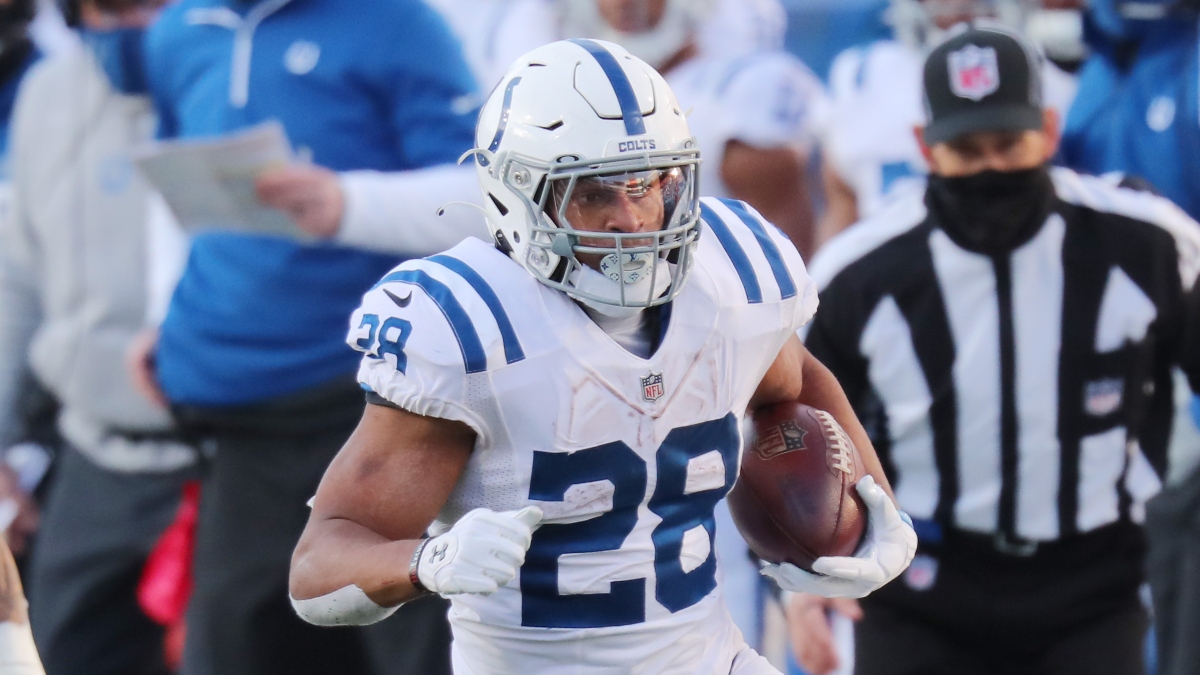
The reality is that Marlon Mack will be returning to the mix this year and should command a handful of touches per game. Additionally, Nyheim Hines' pass-catching role caps Taylor's receiving upside.
Hines' pass-catching role makes him an every-week RB3/Flex option in PPR formats, and his value would jump up into the low-end RB2 range if Taylor ever were to miss time.
Takeaways
- Jonathan Taylor: While Taylor is one of the better backs in the league, he projects closer to a low-end RB1, so I'm hesitant to take him at his ADP (RB6).
- Nyheim Hines: His pass-catching role makes him an every-week RB3/Flex option in PPR formats and would jump up into the low-end RB2 range if Taylor ever were to miss time. He's the Colt to target at ADP.
- Marlon Mack: I view Mack more of a handcuff to Taylor than a potential league-winning stash. Hines limits Mack's upside quite a bit.
Jacksonville Jaguars
James Robinson was one of the biggest surprises of last season as he finished as the overall RB7 after going undrafted in 2020 — that's why it was surprising to see the Jaguars spend a first-round pick on Travis Etienne in 2021 despite having others positions in need of an upgrade.
New head coach Urban Meyer had Etienne line-up at running back and wide receiver at minicamp in hopes of grooming him to play the Percy Harvin/Curtis Samuel role in his offense. However, Meyer may find that he already had a player in Laviska Shenault, who is even better suited for that role.
The Jaguars backfield' is tricky to project right now, and the ADP for each back seems inflated. Therefore, I'm avoiding this situation until we get more clarity.
Takeaways
- James Robinson/Travis Etienne: It's unlikely that both will be able to return value at their ADP (RB22 and RB23). They offer injury upside, but they'll need the other back to miss time to be worth a mid-round pick, so I'm staying away until we get more clarity.
- Carlos Hyde: Lacks the upside to be part of your draft plans, but he'll likely see a handful of touches each week and even more reason to fade this backfield (for now).
Kansas City Chiefs
Clyde Edwards-Helaire was a massive letdown in his rookie season, failing to crack the top 20 in end-of-season rankings (RB22). However, I'm buying the dip on CEH heading into 2021.
There are plenty of reasons to believe in a Year 2 breakout. For starters, the Chiefs beefed-up their offensive line this offseason by adding Joe Thuney, Orlando Brown, and Creed Humphrey. As a result, CEH should have much better run blocking this season, and he can be a dangerous runner in the open field. In addition, opposing defenses have their hands full trying to stop Patrick Mahomes, so it shouldn't be a surprise that CEH faced 8+ man boxes at the sixth-lowest rate last season.
Darrell Williams or Jerick McKinnon are unlikely to ever leapfrog CEH as the lead back, so CEH has excellent job security. It's hard not to love him at his current ADP (RB17).
Williams is the priority backup to own as he would provide low-end RB2 value if CEH ever were to miss time. The Chiefs' offense is so potent that running backs need only 5-10 touches to end up on the fantasy radar. Therefore, McKinnon is worth a "what the heck" flier in deeper PPR leagues.
Takeaways
- Clyde Edwards-Helaire: He's being drafted closer to his floor. His ADP was inside the top 10 overall last season for a reason — he's too talented and in too good of a situation to not return value as the RB17. I'm targeting heavily.
- Darrell Williams: McKinnon lowers Williams' injury upside, but it's ridiculous that the No. 2 RB for the Chiefs is being drafted as the RB64. He is the top backup to target in this range.
- Jerick McKinnon: I would rather take Williams in this range, but I wouldn't blame you for taking McKinnon instead. He has the talent to command a handful of touches a game, which is all you need in this offense to get on the fantasy radar.
Los Angeles Chargers
The groundwork has been set for Austin Ekeler to have a career year in 2021.
The Chargers made significant upgrades to their offensive line via free agency and the draft. They also brought in offensive coordinator Joe Lombardi, who comes from the Sean Payton coaching tree and has a history of getting the most out of talented pass-catching backs. So, unless Justin Herbert falls victim to a sophomore slump, Ekeler should be set for his best season yet.

Justin Jackson, Joshua Kelly and sixth-round rookie Larry Rountree provide solid depth behind Ekeler. Jackson carries the most injury upside of the group, but the Chargers could use a 2-3 RBBC whenever Ekeler is out of the lineup, so it's difficult to project Jackson as anything more than a RB3/Flex in that scenario.
Takeaways
- Austin Ekeler: Don't let his ADP (RB9) scare you away. He still has the potential for a CMC-like breakout season.
- Justin Jackson: He's the best bet to benefit from an Ekeler injury, and Jackson's ADP (RB75) makes him free. However, his upside is limited, considering he would likely lead a 2-3 RBBC in the event of an Ekeler injury.
Los Angeles Rams
Cam Akers' usage took a massive jump toward the end of his rookie season:
- Weeks 1-12 (9 games active): 27% of team rush attempts; 8% routes run
- Weeks 13-17 (4 games active): 74% of team rush attempts; 49% routes run
The massive usage we saw over the final four games is fueling the recency bias we see in his current ADP (RB10). Yes, Malcolm Brown heading to Miami will raise Akers' floor and ceiling considerably. However, Darrell Henderson will still command 5-10 touches a game and limit Akers' upside. As a result, I view Akers as a low-end RB1.
With Brown out of the equation, the door is open for Henderson to provide RB3/Flex value, even when Akers is active. Henderson also carries a ton of injury upside — he would become a mid-range RB2 if Akers ever were to miss time.
Takeaways
- Cam Akers: Will be worth the ADP (RB10) if he can maintain the late-season usage. However, it's not a guarantee, making him a bit risky inside the top 10.
- Darrell Henderson: One of the elite backups to target in the RB40-46 range who carries RB2+ injury upside while also providing RB3/Flex value in bye-heavy weeks.
Las Vegas Raiders
The Raiders made a series of bizarre offseason moves that involved blowing up their elite offensive line, then giving Kenyan Drake a two-year deal for $11 million to back-up Josh Jacobs. It's a crushing blow to Jacobs, who will likely be in a timeshare with Drake.
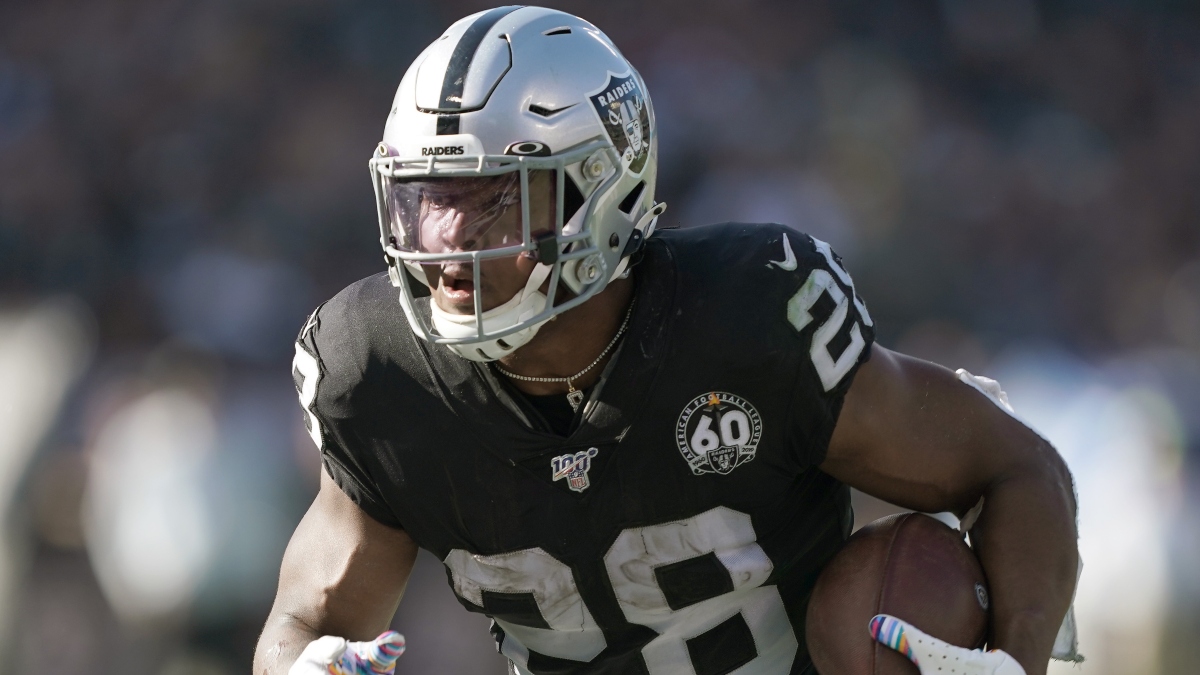
In addition, Jacobs lack of passing game usage means he'll need positive game scripts to hit his ceiling. Unfortunately, the Raiders (6.5 win total) are unlikely to provide enough positive game scripts for him to return value at his ADP (RB19).
Takeaways
- Josh Jacobs: Kenyan Drake is enough of a threat for me to shy away from Jacobs at his current ADP (RB19).
- Kenyan Drake: The Raiders were a bad landing spot for Drake. He's talented enough to start on a few teams, but will need a Jacobs injury to offer RB2 value. However, Drake is part of the Elite Backup Tier going in the RB38-46 range.
Miami Dolphins
Myles Gaskin is a prime candidate for my "Frozen Pond Tier."
On the surface, Gaskin seems like a safe pick as he should be the heavy favorite to be the Dolphins' Week 1 starting back. However, we have to remember that Gaskin is a seventh-round pick who wasn't on any radar heading into 2020. There's a chance that either Salvon Ahmed or Malcolm Brown — or both — will be able to leapfrog Gaskin as the lead back at some point this season.
Brian Flores is a no-nonsense coach who comes from the Bill Belichick coaching tree. Flores benched Tua Tagovailoa numerous times in-game for Ryan Fitzpatrick because Flores felt it gave his team the best chance to win. Most coaches wouldn't dare to potentially shatter the confidence of their QB of the future like that, but Flores did it anyway. He doesn't strike me as a coach who will feel the need to stick to a true workhorse back.
If Gaskin struggles at any point, we have to assume Flores will go with the "hot hand" approach, making this a tricky backfield to forecast.
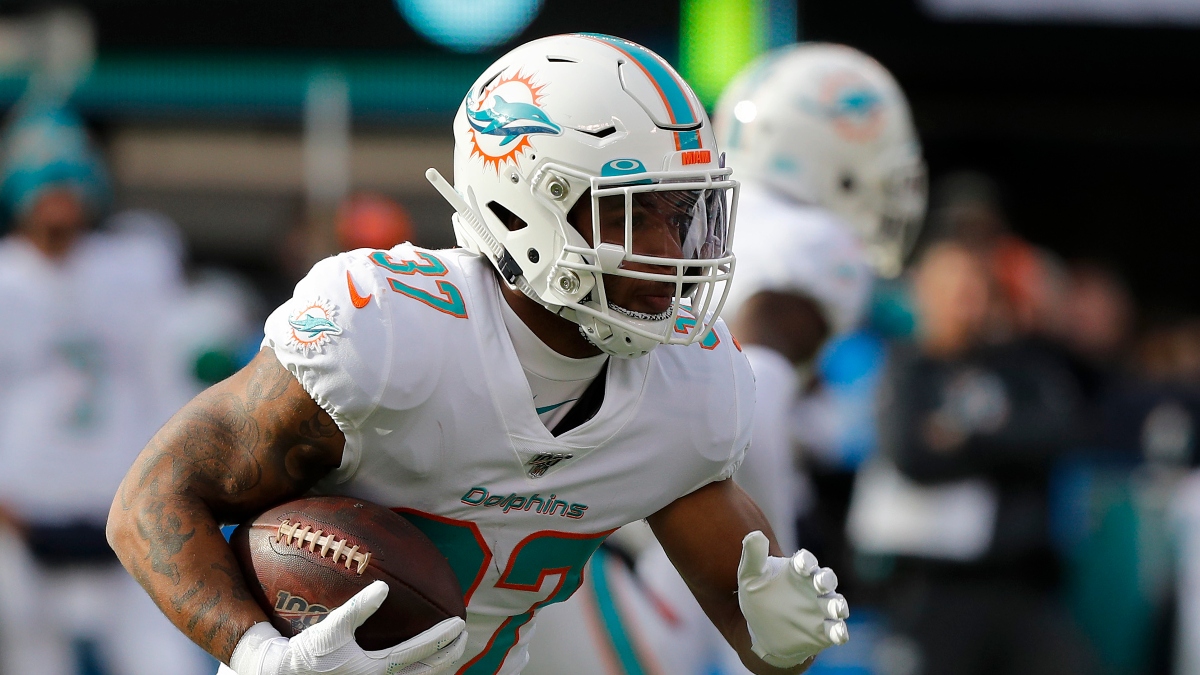
Takeaways
- Myles Gaskin: His ADP (RB26) seems appropriate considering he should open the season as the workhorse back. However, his week-to-week outlook could be volatile. Therefore, I'm typically avoiding most RBs in this "frozen pond" range and instead targeting WRs like Brandon Aiyuk, Kenny Golladay, Chase Claypool, and Odell Beckham.
- Salvon Ahmed/Malcolm Brown: I see these backs as threats to Gaskin's floor/ceiling rather than high-upside stashes. I'm avoiding this backfield (for now).
Minnesota Vikings
Alexander Mattison offers RB1 upside whenever he needs to start for an injured Dalvin Cook. In 2020, he made two spot starts for Cook and posted the following lines:
- Week 6 (vs. ATL): 10 rush; 26 rush yards; 1 rec; 4 rec yards
- Week 17 (at DET): 21 rush; 95 yards; 1 rush TD; 3 rec; 50 rec yards; 1 rec TD
Mike Boone signed with Denver in the offseason, making the depth behind Mattison pretty weak. He's one of the top backups to own and is well worth his ADP (RB49).
Takeaways
- Dalvin Cook: Worth the No. 2 overall pick in drafts.
- Alexander Mattison: One of the elite backup RBs and well worth his ADP (RB49).
New England Patriots
Damien Harris has the inside track to be the team's Week 1 starter. However, it's hard to get excited about him at his current ADP (RB37). The Patriots have a crowded depth chart with Sony Michel, James White and fourth-round pick Rhamondre Stevenson. If Cam Newton starts 10 or more games, it'll limit each RB's upside even further.
Nevertheless, Harris has some sneaky upside if the Pats either trade away Sony Michel and/or announce Mac Jones as the Week 1 starter. The market doesn't appear to be pricing in either scenario, offering Harris closer to his floor.
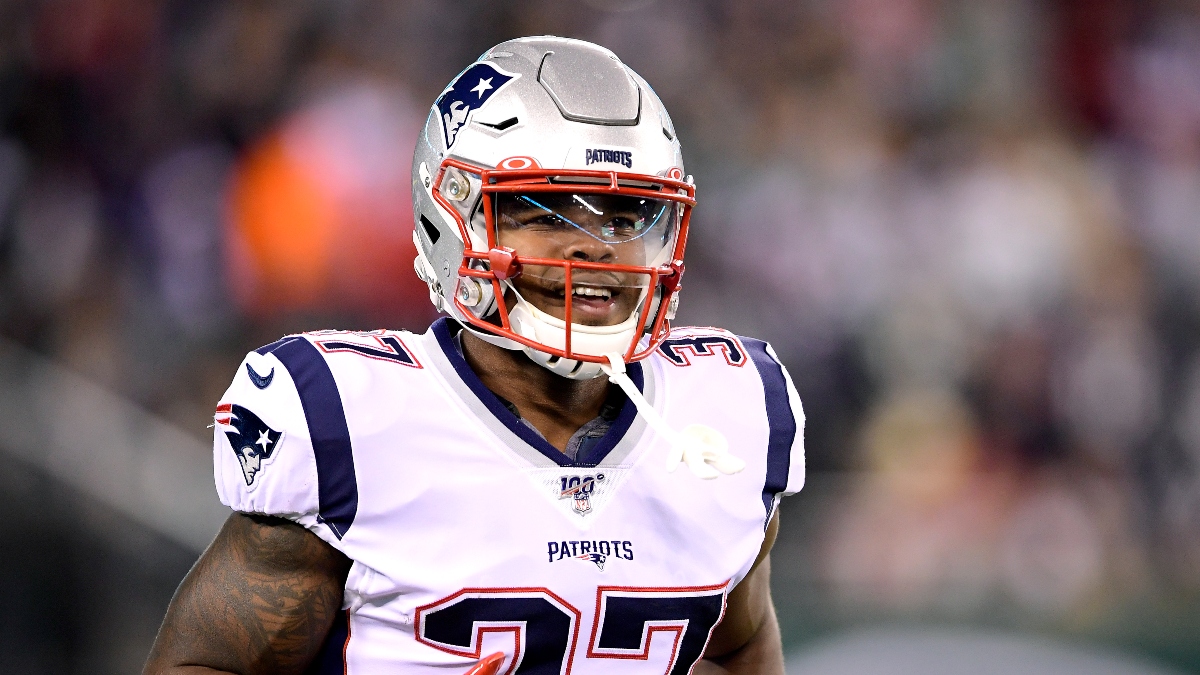
Stevenson is the only backup I'm interested in taking the occasional late-round flier on. He's a bigger back at 5-foot-11 and 231 pounds, who is capable of handling a workhorse role if needed. Unfortunately, his only path to RB2 upside as a rookie would be if the Patriots traded away Michel and Harris got hurt in-season. There are better bets in Stevenson's ADP range like Chuba Hubbard (RB53), Darrel Williams (RB64), and Devontae Booker (RB64).
Takeaways
- Damien Harris: His current ADP (RB37) seems fair until you factor in the built-in upside of a potential Michel trade or the team announcing Jones as the Week 1 starter. Harris' ADP would climb in either scenario.
- Sony Michel: I'm avoiding him altogether.
- James White: A PPR option in deeper leagues. He would get a boost if Jones starts 10 or more games.
- Rhamondre Stevenson: He has paths to RB2 upside as a rookie, but he would need a lot to go his way.
New Orleans Saints
Alvin Kamara would likely benefit from Jameis Winston emerging as the primary quarterback for the Saints this season. In Taysom Hill's four starts last season, Kamara averaged a receiving line of 2.5/13/0. No matter how the QB situation in New Orleans sorts itself out, Kamara is too talented and Sean Payton is too intelligent not to find a way to get Kamara the ball.
On the flip side, Latavius Murray could benefit from Hill being the primary quarterback this season — he had his best game of the season in Hill's Week 12 start. Opposing defenses would have a hard time defending the edge for a potential Hill scramble or a run up the middle by Murray.
Either way, Murray's main value is his RB1 injury upside if Kamara were ever to miss time.
Takeaways
- Alvin Kamara: I prefer Derrick Henry at No. 3 and Kamara No. 4 overall in drafts.
- Latavius Murray: Murray, Mattison and Pollard are the premier backup RBs to target in the RB40-49 range. They all possess RB1 injury upside and could offer RB3/Flex value in bye-heavy weeks. I aim to roster at least one of these backs in every draft.
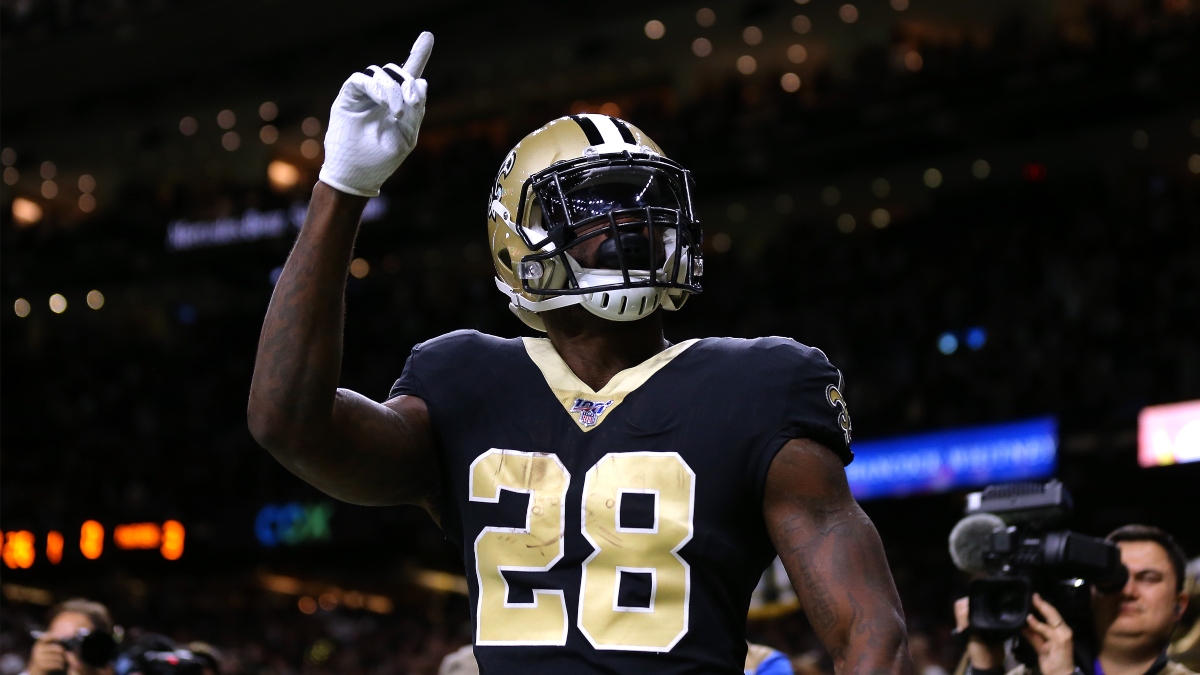
New York Giants
Saquon Barkley will be returning from a season-ending ACL tear, but the surgery was delayed a bit to let his MCL heal. Therefore, he may not be 100% by Week 1, and the Giants have hinted about easing him in to start the season.
This is a situation we have to monitor heading into training camp, and Barkley's ADP could drop to the end of the first round if we have any more negative reports.
Devontae Booker could provide RB3/Flex value early in the season if the Giants ease Barkley in. Booker flashed his three-down potential last season as Josh Jacobs' backup and would have mid-range RB2 upside if Barkley ends up missing any time. Booker's ADP will rise considerably if we get any negative reports around Barkley's knee in training camp.
Takeaways
- Saquon Barkley: I'm hesitant to take him at his current ADP (RB5) given the very real chance he's less than 100% to begin the season.
- Devontae Booker: Offers RB2 injury upside. Given the slight concern over Barkley's Week 1 availability/role, Booker's ADP should be much lower than RB64.
New York Jets
The Jets' backfield is wide open heading into 2021. Tevin Coleman, Michael Carter, Ty Johnson and La'Michel Perine are all jockeying for their position on the depth chart.
My money is on Carter to lead the team in touches. The fourth-round pick may not have the size (5-foot-8, 201 pounds) to handle a 20-touch role, but he is talented enough to produce RB2/Flex numbers with 10-15 touches. He's the only Jet back I have interest in, but at his current ADP (RB32), I'd rather take a gamble on Trey Sermon if he's available.
Takeaways
- Michael Carter: Target if he falls outside of RB35 in your draft. He's the most talented back on the Jets and should lead the team in touches.
- Tevin Coleman/Ty Coleman/La'Michel Perine: I'm avoiding this group — they are roadblocks to Carter hitting his upside as opposed to upside stashes for your bench.
Philadelphia Eagles
Miles Sanders has a wide range of outcomes for the 2021 season.
Sanders could become a true workhorse back under the new regime and thrive playing alongside Jalen Hurts. In the three starts by Hurts (when Sanders was active), he posted the RB6 score. Sanders has the talent to become an every-week RB1 option, and it wouldn't surprise anyone if he were to hit that potential this season.
However, the most likely outcome is likely a frustrating RBBC limiting Sanders' touchdowns (Hurts and Jordan Howard) and receiving production (Boston Scott, Kerryon Johnson and Kenneth Gainwell).
Gainwell is the only backup worth stashing here. However, his ADP (RB50) seems a bit rich, considering he would likely need Sanders and a backup to miss time at once in order to offer RB2 upside. As a result, I'm shying away from the Eagles' backfield in early drafts.
Takeaways
- Miles Sanders: His ADP seems fair given his wide range of outcomes.
- Kenneth Gainwell: The Eagles' backup with the most upside. I'm targeting backups with more apparent paths to upside in this range. I'm fading the Eagles backfield for the most part.
Pittsburgh Steelers
Mike Tomlin loves having a workhorse back, which is why the Steelers used their first-round pick on Alabama's Najee Harris, who should be capable of handling a 20-touch role starting in Week 1.
The Steelers' offensive line could struggle this season, which will hurt Harris' efficiency. However, volume is king when it comes to fantasy value, and Harris should have no concerns there.
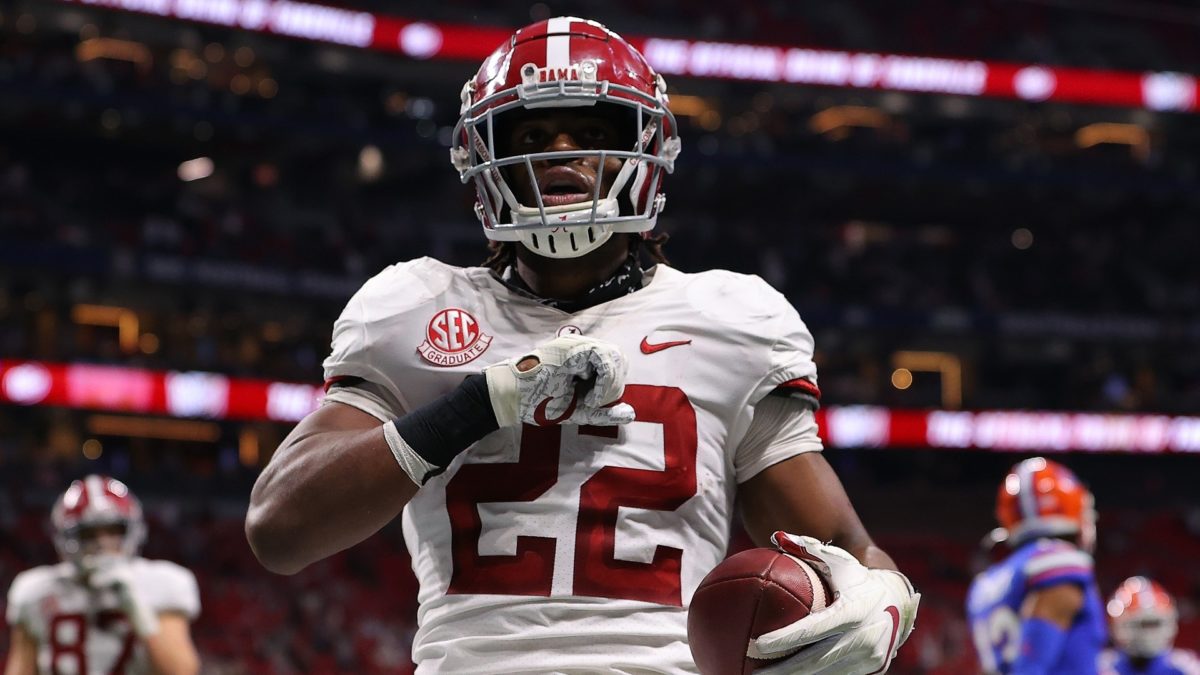
It's unclear which backup would offer the most injury upside. Benny Snell would be capable of handling a workhorse role, but the most likely outcome would be a RBBC featuring Snell, Anthony McFarland, and Kalen Ballage.
I'm not interested in using a bench slot to stash any of these backs.
Takeaways
- Najee Harris: The rookie is set to be the Steelers' workhorse back right away, and his ADP (RB13) seems fair.
- Benny Snell: The lack of clarity behind Harris makes it difficult to use a bench slot to stash any Steelers backups.
Seattle Seahawks
Chris Carson signed a two-year deal with the Seahawks in the offseason, which likely makes him the team's starter for the next two seasons. He is a safe bet at his current ADP (RB20), which seems to be the case every season with him. However, the only concern with Carson is his durability.
Due to his violent running style, Carson has yet to play an entire season over his four-year career. Therefore, we should expect him to miss a couple games, meaning the injury upside for Seattle's backups is more likely to hit.
Rashaad Penny has the talent to post RB2 numbers whenever Carson is out of the lineup. However, we recently discovered that Penny underwent a cleanup procedure on the same knee that suffered a torn ACL in 2019 — enough of a concern to avoid him in drafts until we start getting positive training camp reports.
Takeaways
- Chris Carson: I'm targeting him heavily at ADP (RB20).
- Rashaad Penny: I'm avoiding until we get positive news on his knee.
San Francisco 49ers
The 49ers are a fitting team name because investing in their backfield is like mining for gold — we know that if we take enough swings at their running backs, we will eventually strike it rich. As a result, this is a backfield I want to invest in heavily.
Raheem Mostert is the safest bet as he is the heavy favorite to be the team's Week 1 starter. His one-cut style of running and blazing fast speed — he had the first- and second-fastest measured speed while carrying the ball of 2020 according to NextGenStats — makes him the perfect fit for Kyle Shanahan's zone running scheme. The scheme also forces the running back to trust that the offensive line will open up running lanes — if the hole isn't there, the RB can be prone to taking on a violent hit, which could be an underlying factor in why Mostert has been in and out of the lineup with injuries the past couple of seasons.

Jeff Wilson suffered a torn meniscus that will keep him out for 4-6 months. It opens the door for third-round pick Trey Sermon (6-foot, 215 pounds) to be the goal-line back out of the gate. Sermon carries RB2 upside heading into the season, and the chances of him hitting his ceiling are more likely than other backs in the RB30-35 range.
Sermon will become an instant RB2+ whenever Mostert inevitably misses time due to injury, but he also has a real chance to leapfrog a healthy Mostert to become the team's lead back.
Takeaways
- Raheem Mostert: He offers quite a bit of value at his current ADP (RB30). However, his value will peak early in the season when he's healthy, Sermon is learning the offense, and Wilson is out due to injury. Those factors will turn against him over the second half of the season.
- Trey Sermon: The hype is warranted — he's a bit of a gamble at his ADP (RB33), but he should get plenty of chances to hit his RB2 upside.
- Wayne Gallman/Jeff Wilson (IR stash)/Elijah Mitchell/JaMycal Hasty: The 49ers' RB we least expect to hit their ceiling usually does every season (see: Matt Breida in 2018, Raheem Mostert in 2019, and Jeff Wilson in 2020). I'm OK taking a flier on any of these backs in deeper leagues.
Tampa Bay Buccaneers
Giovani Bernard signed a one-year deal with Tampa Bay, which makes this a tricky backfield to trust. I'm expecting a three-man RBBC on a pass-heavy offense, so it'll we should avoid this situation unless one back suffers an injury.
Leonard Fournette is cheap enough (RB34) to target on occasion. He would provide low-end RB2 value if either Ronald Jones or Bernard were to miss time. There is also a chance "Playoff Lenny" shows up for the entire season, and he will be more of a workhorse back than we expect.
Takeaways
- Leonard Fournette: Jones and Bernard lower Fournette's upside. On the flip side, if either Jones or Bernard were to get injured, Fournette would become a low-end RB2/Flex. Having two separate paths to injury upside gives him a unique advantage over similar backs in this range.
- Ronald Jones: I have no idea why he's being drafted ahead of Fournette. I'm passing on him.
- Giovani Bernard: Worth a stash in PPR leagues as he could become Tom Brady's security blanket (a la James White).
Tennessee Titans
I take pride in ranking Henry above his ADP every year, which means I am taking him at No. 3 over Alvin Kamara.
Opposing defenses will have their hands full trying to slow down wide receivers A.J. Brown and Julio Jones, which should create massive running lanes for Henry to exploit as he's a lock for another 300-carry season.
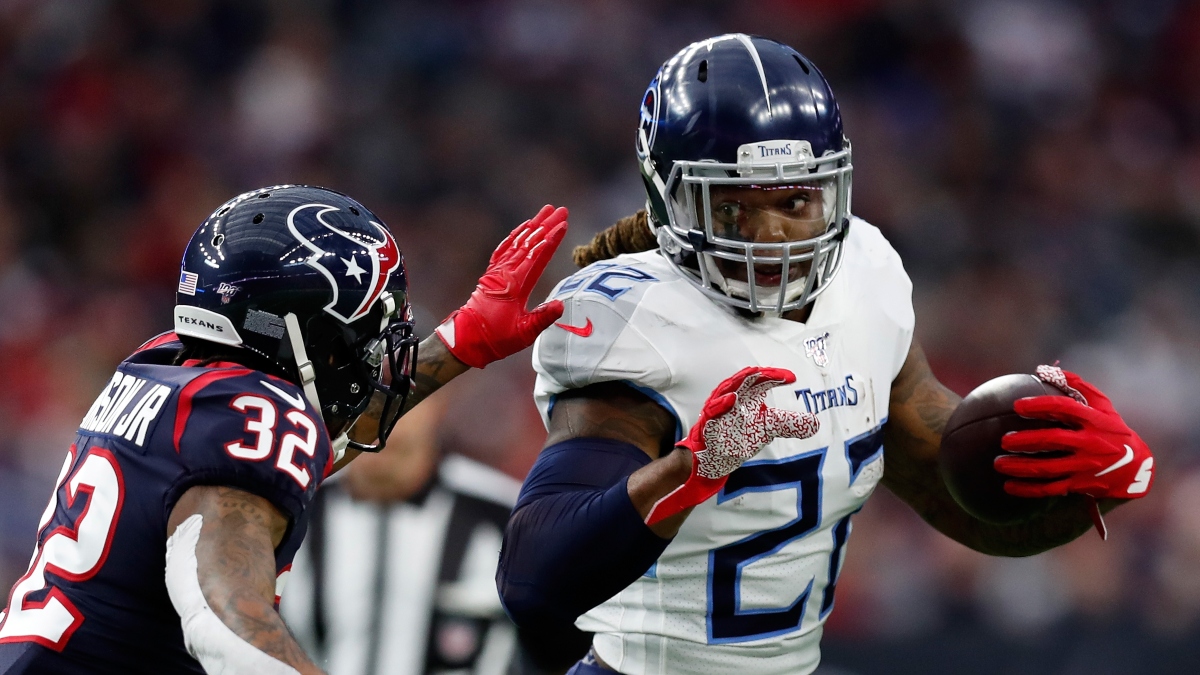
At some point, the enormous usage will take its toll on Henry's body — I think the 2021 season will be the end of his prime, and we will see his decline begin next year.
Darrynton Evans, Jeremy McNichols, and Brian Hill will compete to become Henry's backup. It's a situation to avoid, as Derrick Henry offers few scraps for his backup(s) and is as durable as it gets (he has only missed two games in his five-year career).
Takeaways
- Derrick Henry: I target him when he's available at No. 3 or 4 overall.
- Darrynton Evans: His pass-catching skills makes him the backup to target. However, his injury upside is limited given (1) it would likely be a two- to three-way RBBC if Henry were to get hurt and (2) Henry never gets hurt.
Washington Football Team
Antonio Gibson received praise from Ron Rivera and running backs coach Randy Jordan for his OTA performance, saying the difference was "night and day." It's excellent news, considering he seems to be over a toe injury that hindered him down the stretch last season.
The only thing preventing Gibson from RB1 status is the presence of pass-catching specialist J.D. McKissic. Gibson's routes run per dropback rate hovered around 36%, while McKissic dominated with a 58% share. If Gibson can crack a 50% routes run rate, it would elevate my projections for him inside the top-12.
Gibson, CEH, and Chris Carson are the RBs to target in the RB2 Tier.
McKissic benefited from having check-down artist Alex Smith under center for eight games of 2020. However, Ryan Fitzpatrick will opt to scramble or chuck it downfield instead of checking down to his RB. Nevertheless, McKissic is still worth a flier in PPR formats, and he carries more injury upside than most third-down backs. In Weeks 11-13, when Gibson was out of the lineup, McKissic posted the RB10 score.
Takeaways
- Antonio Gibson: Worth taking at ADP (RB14) given his built-in upside if we see his pass-catching role increase.
- J.D. McKissic: Worth his ADP (RB48) in PPR formats. Offers more injury upside than your typical third-down back.


